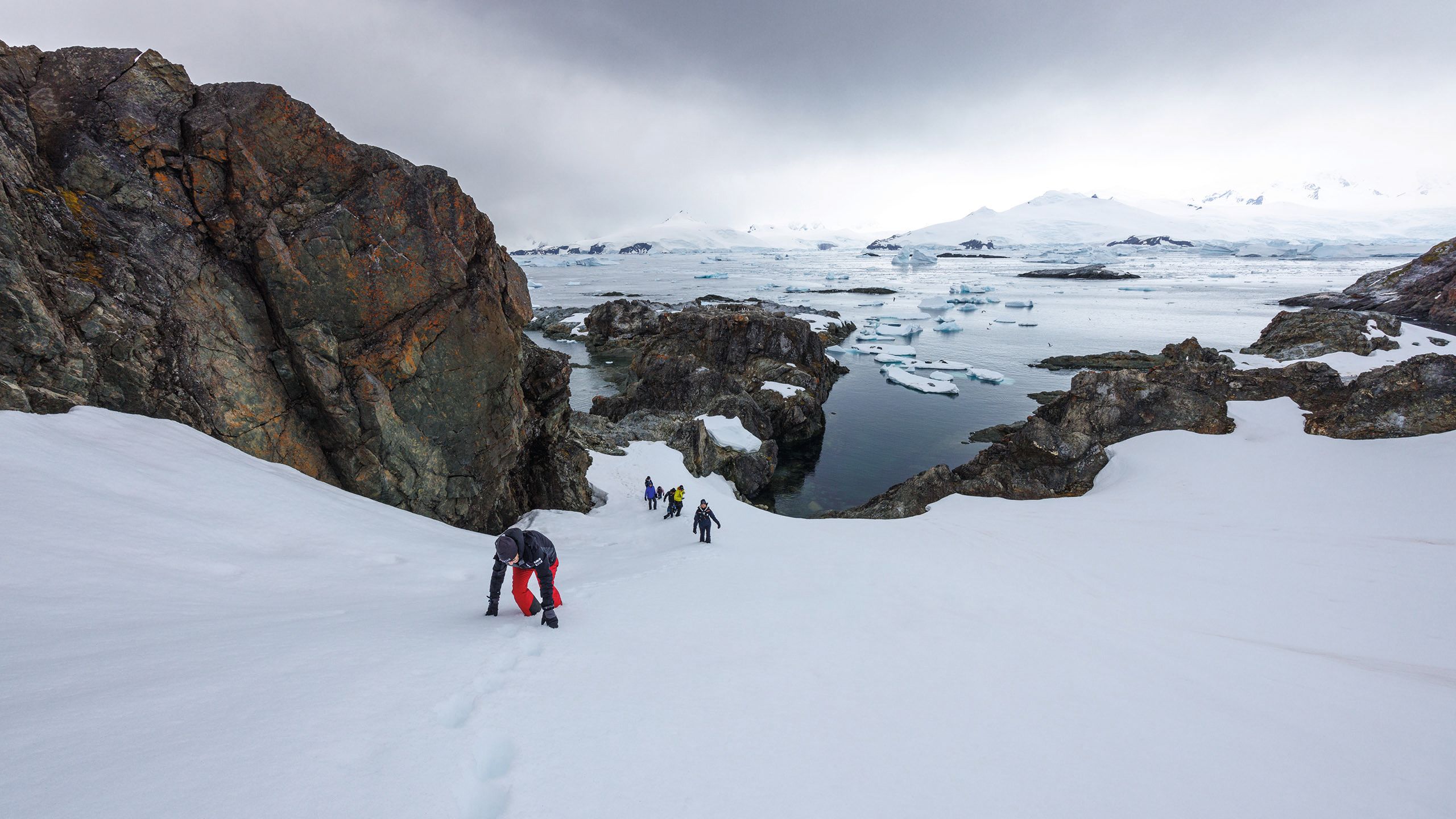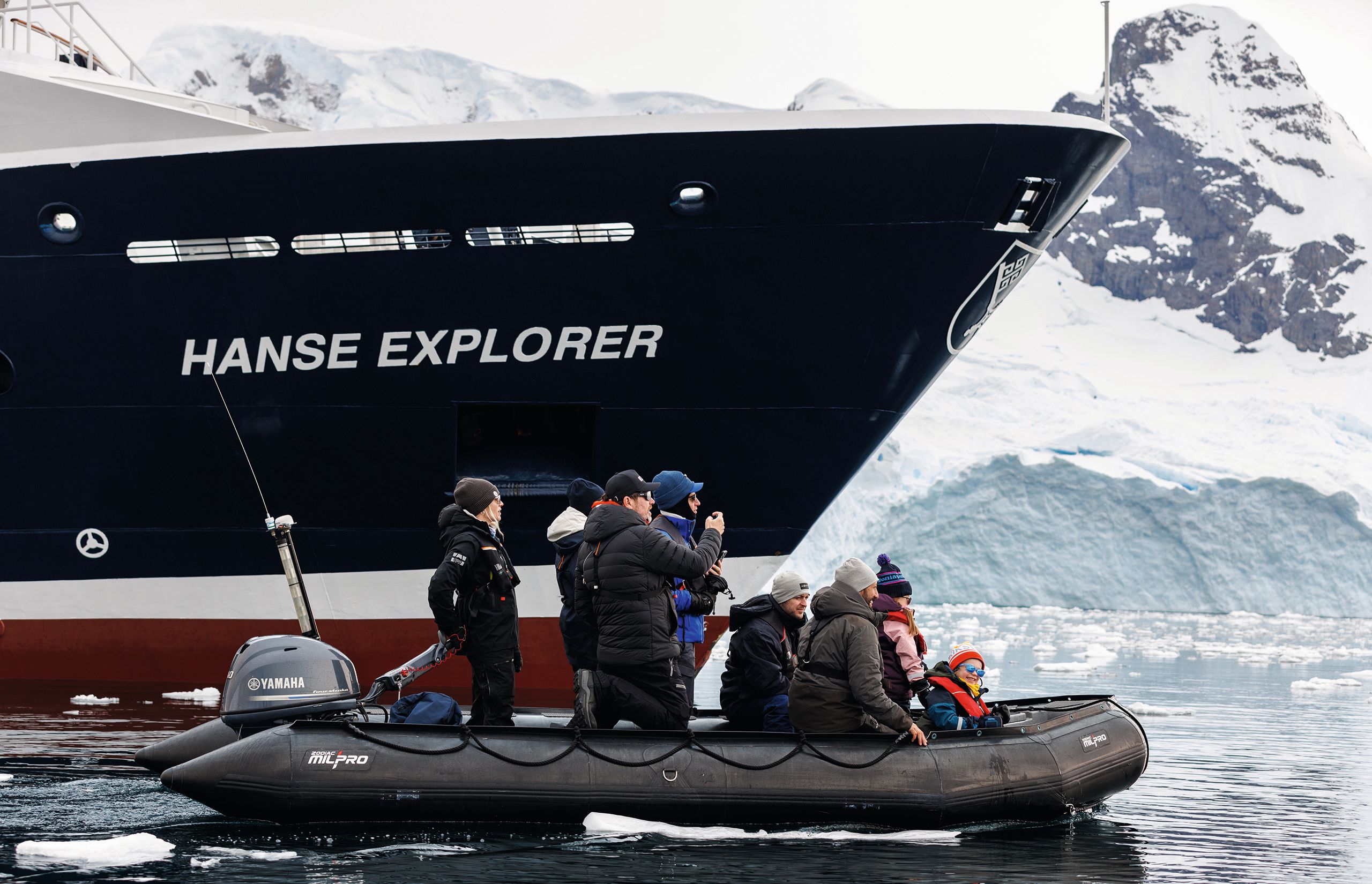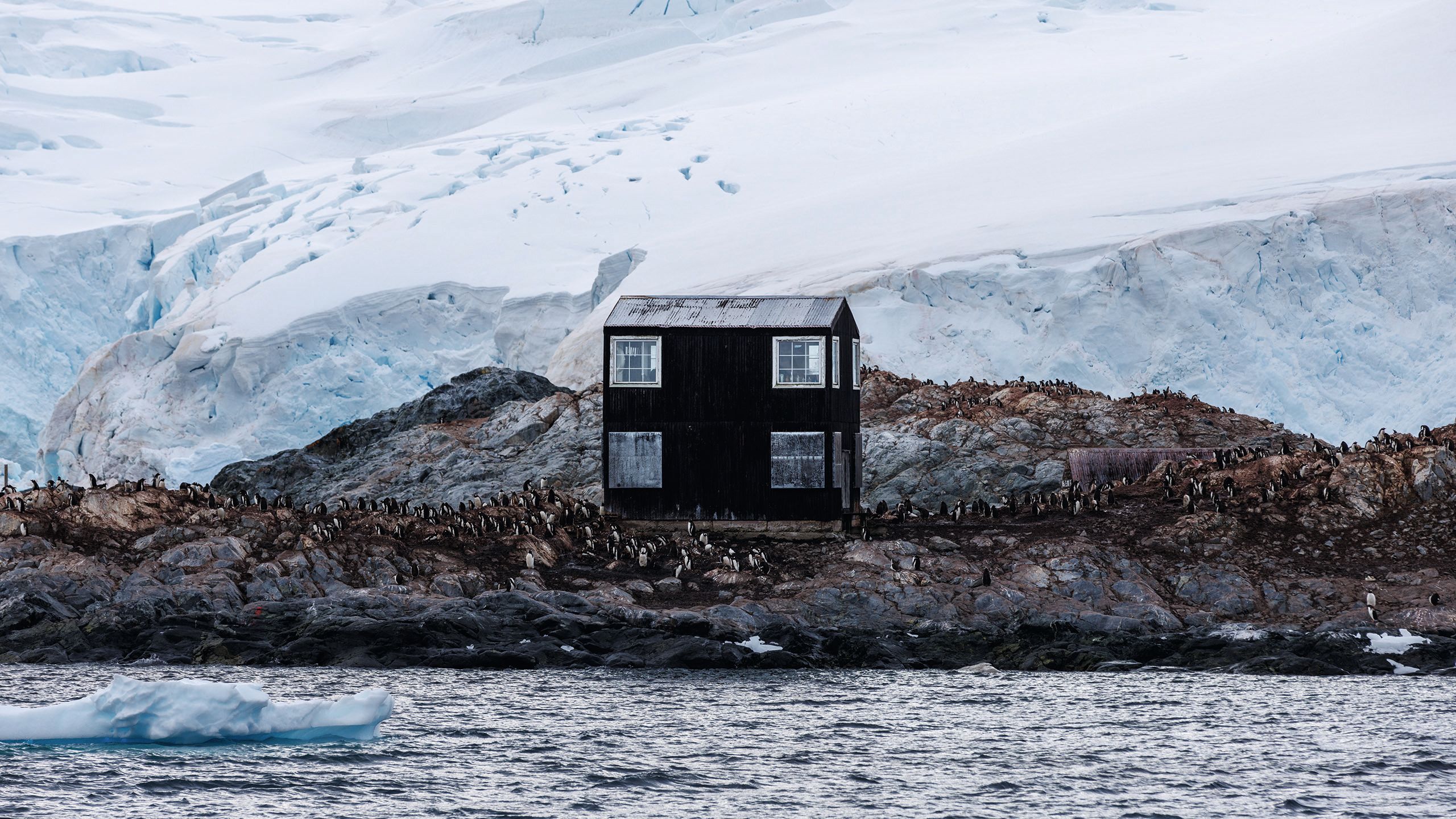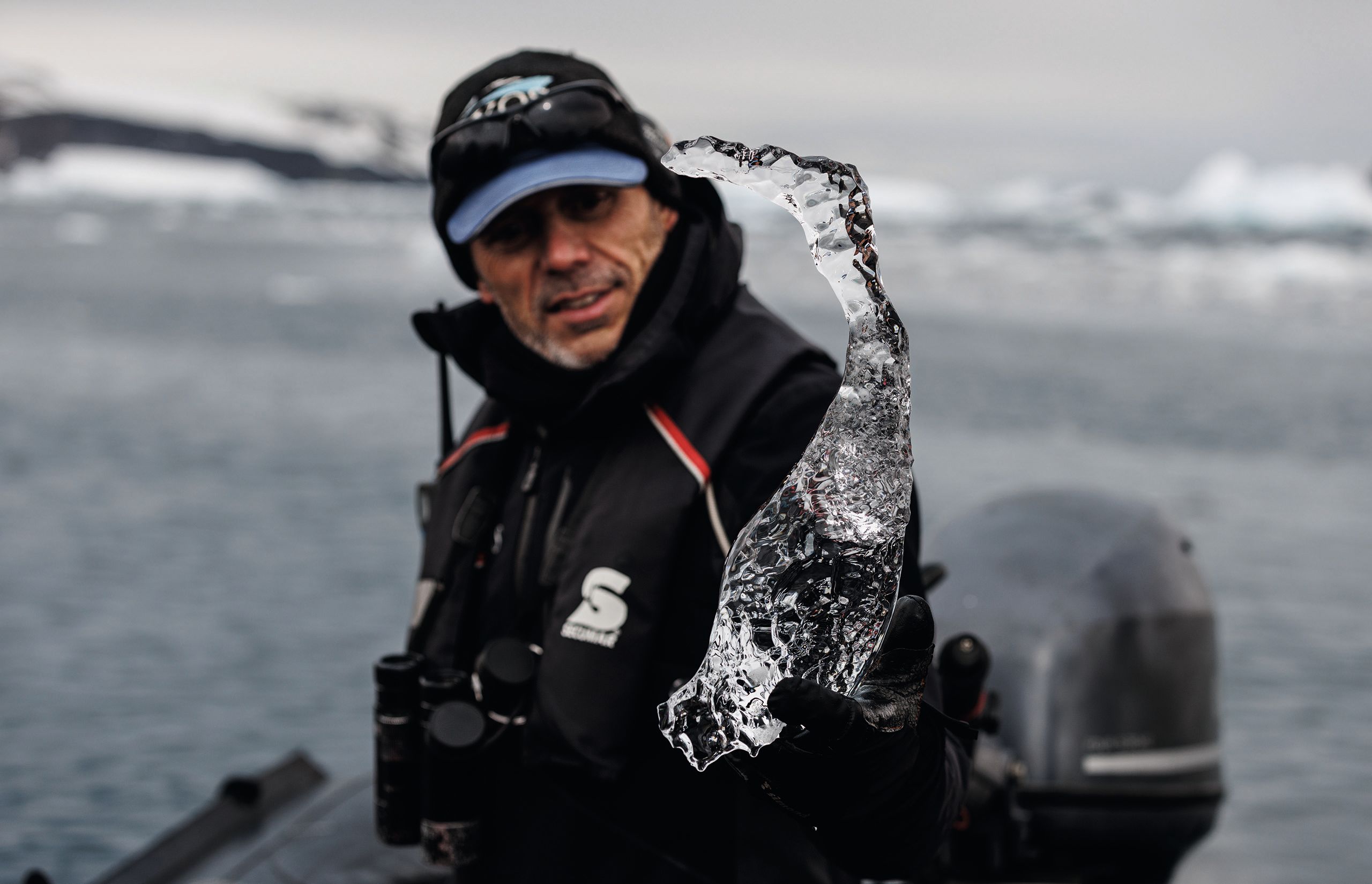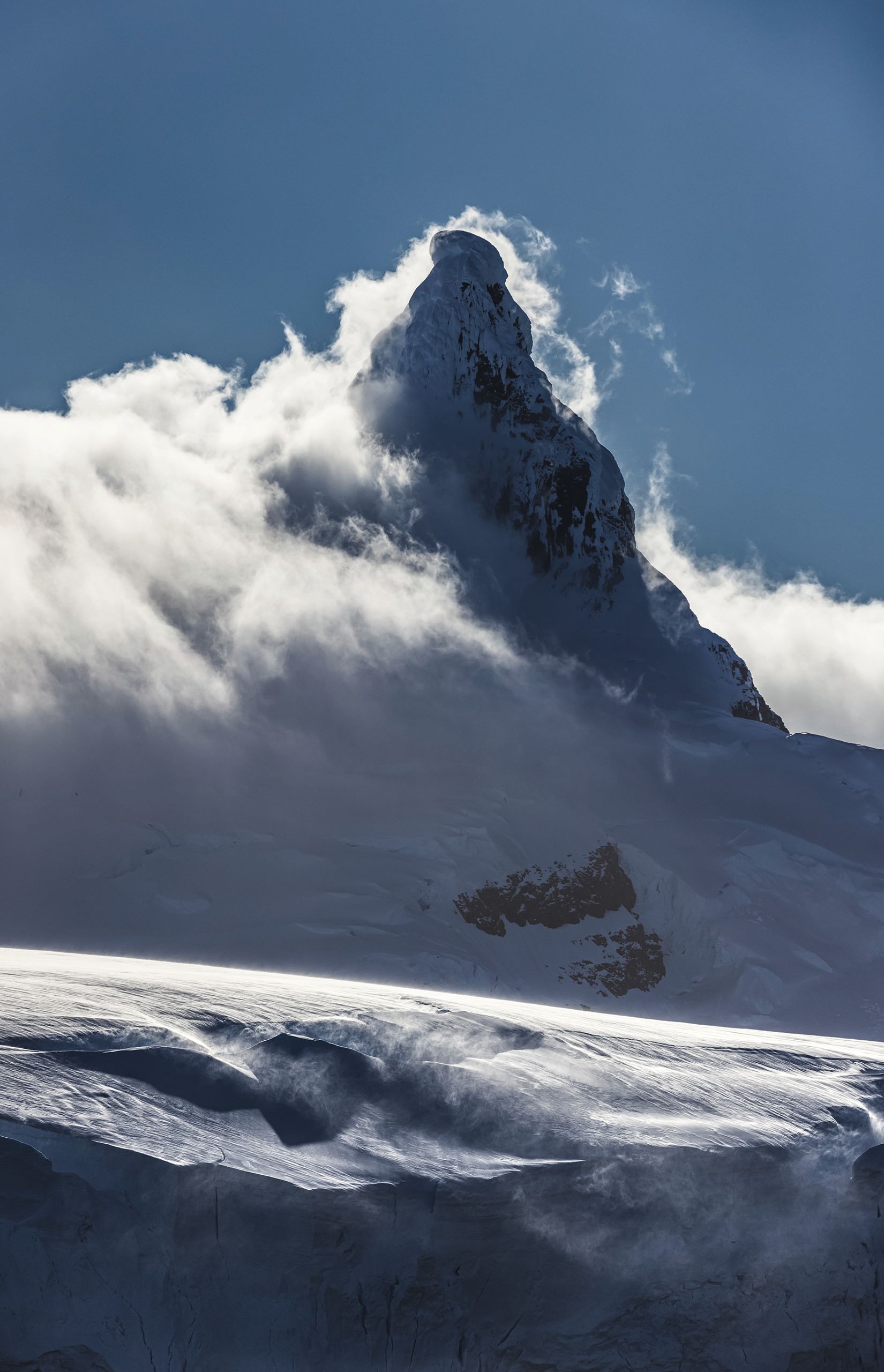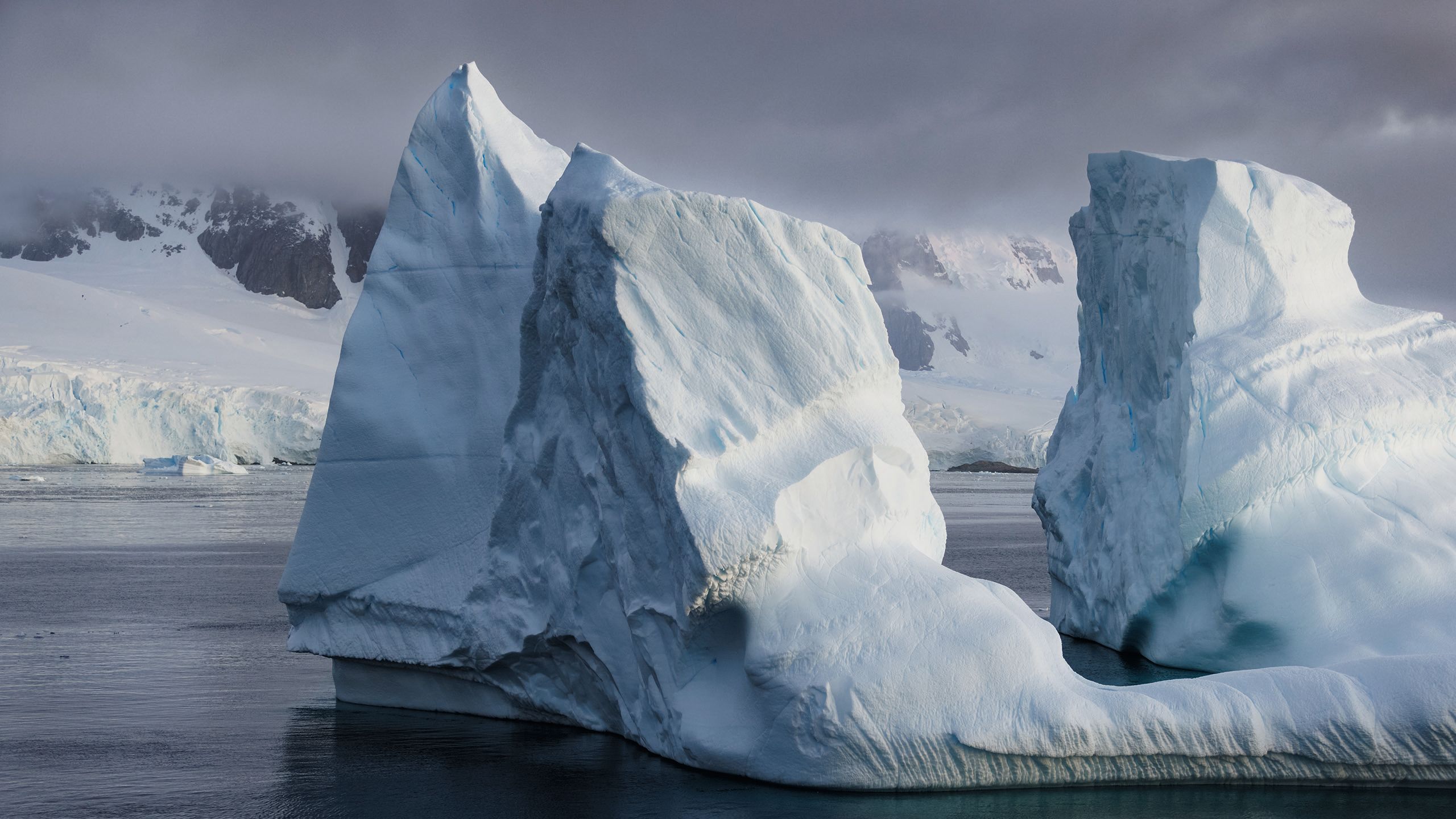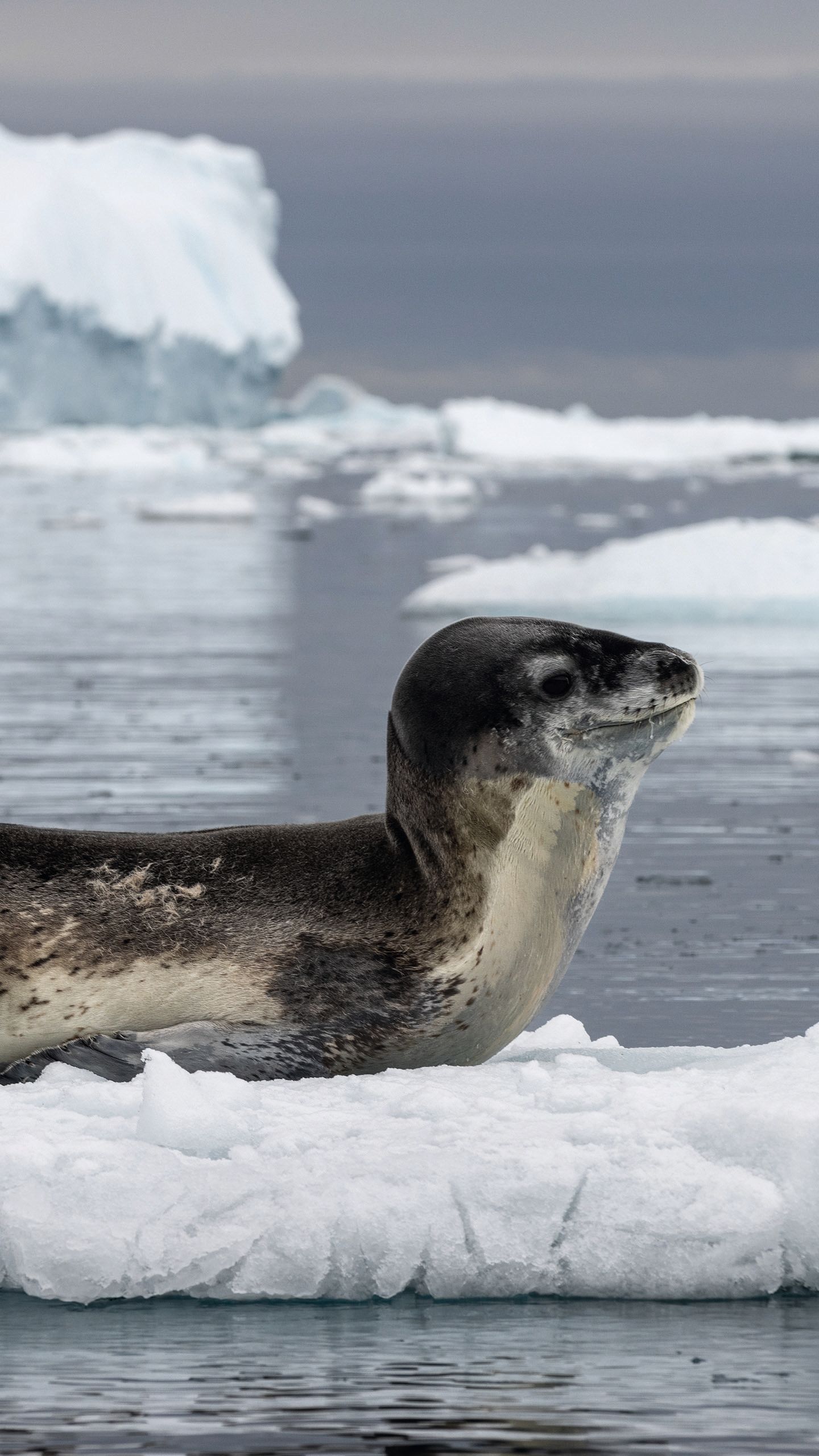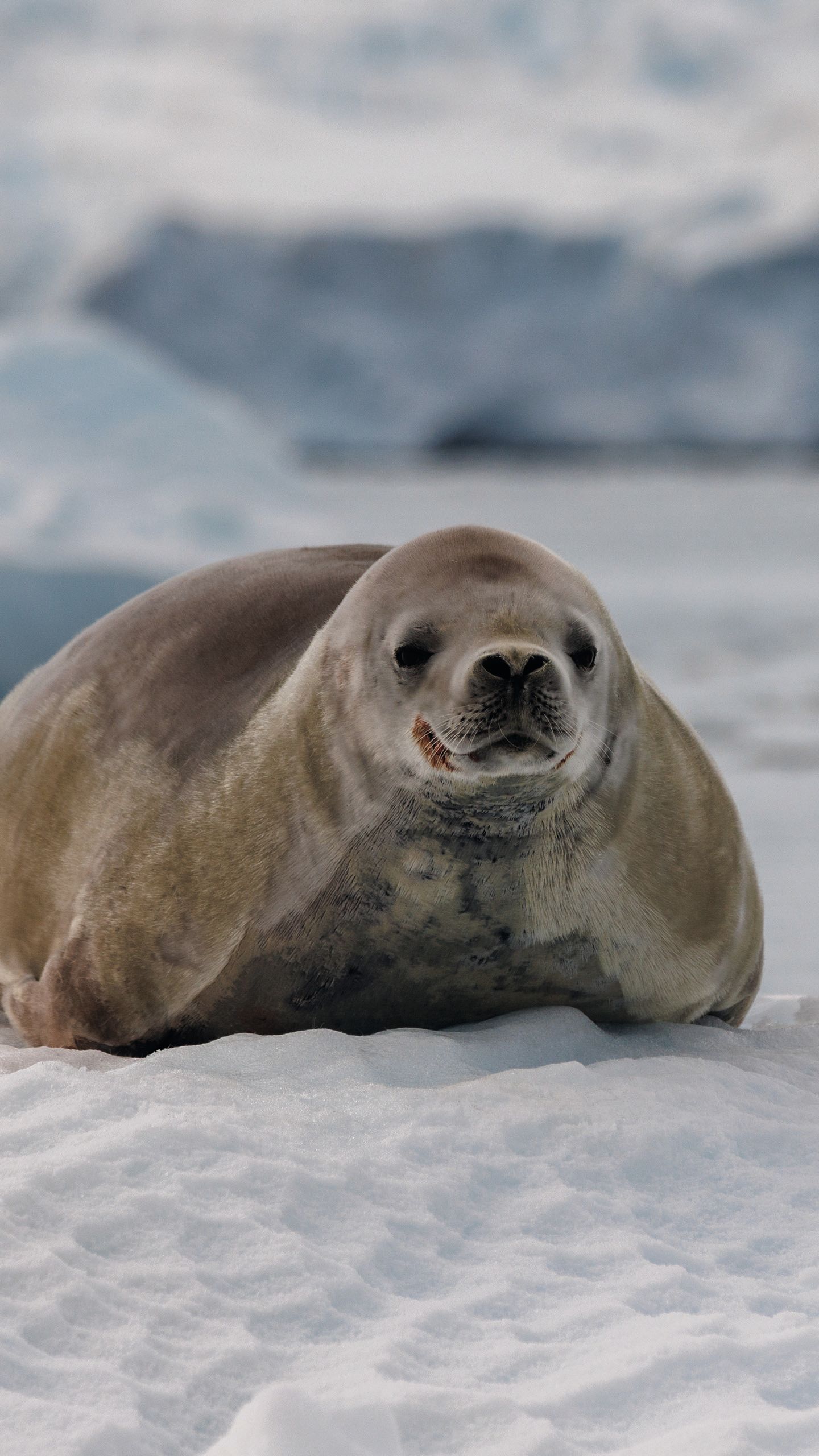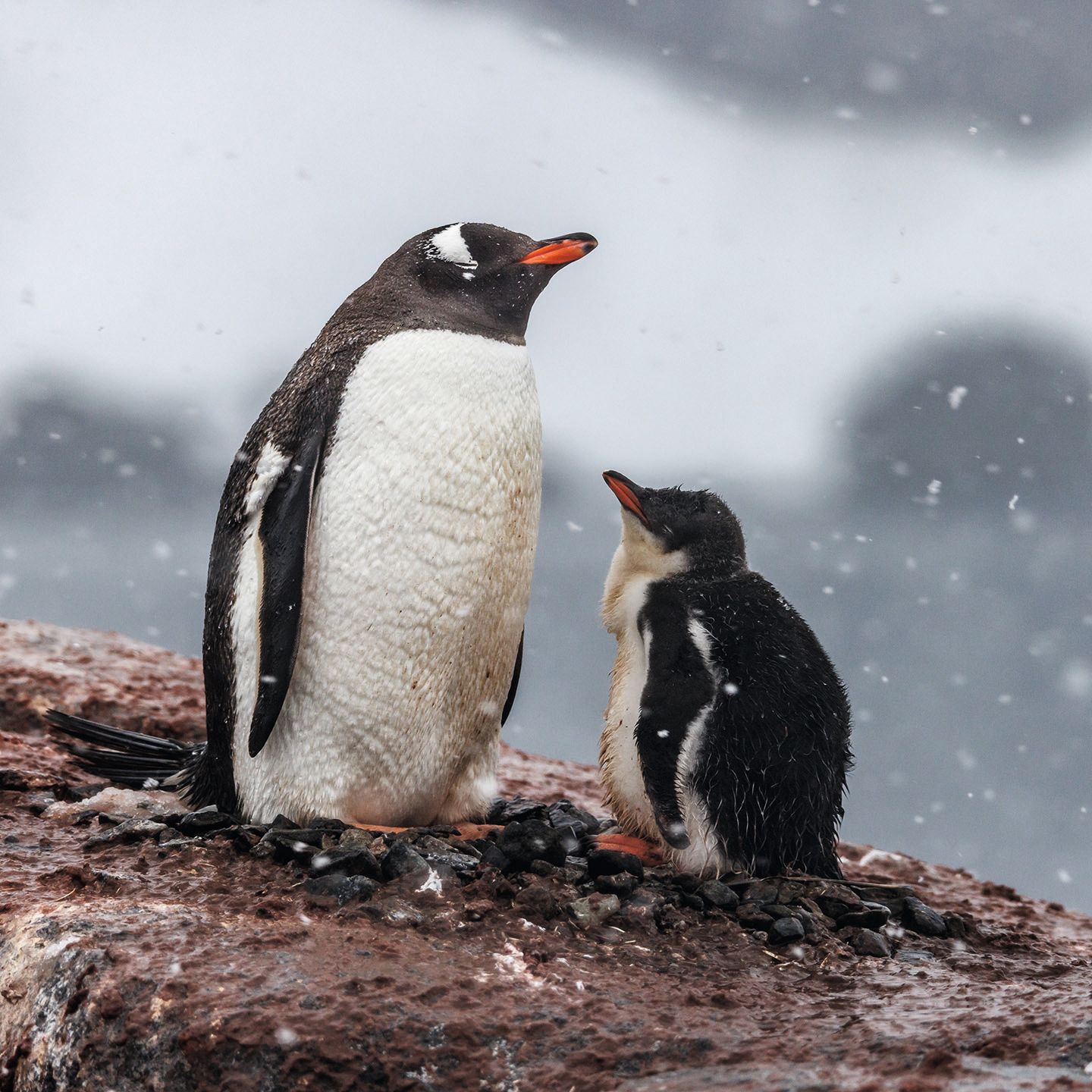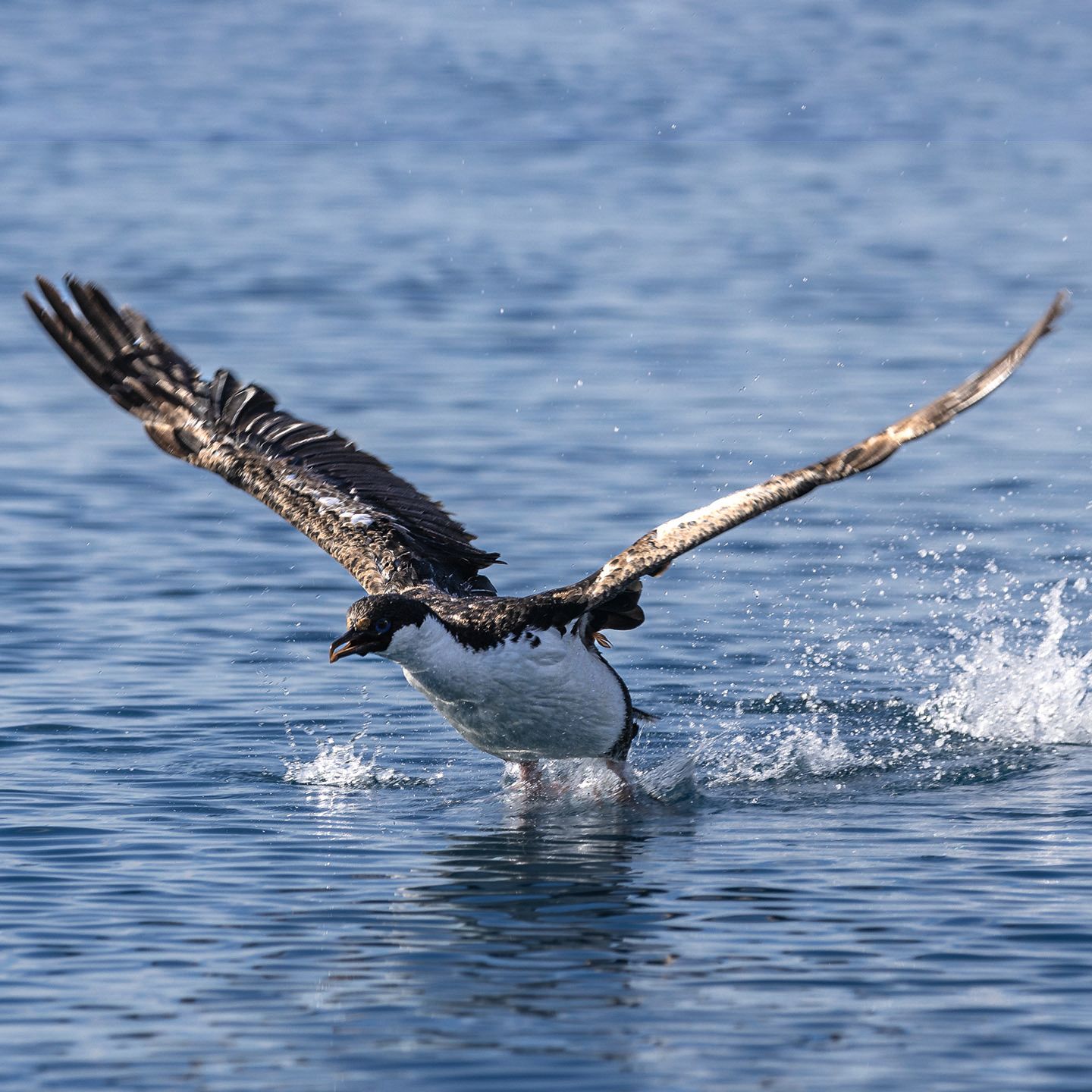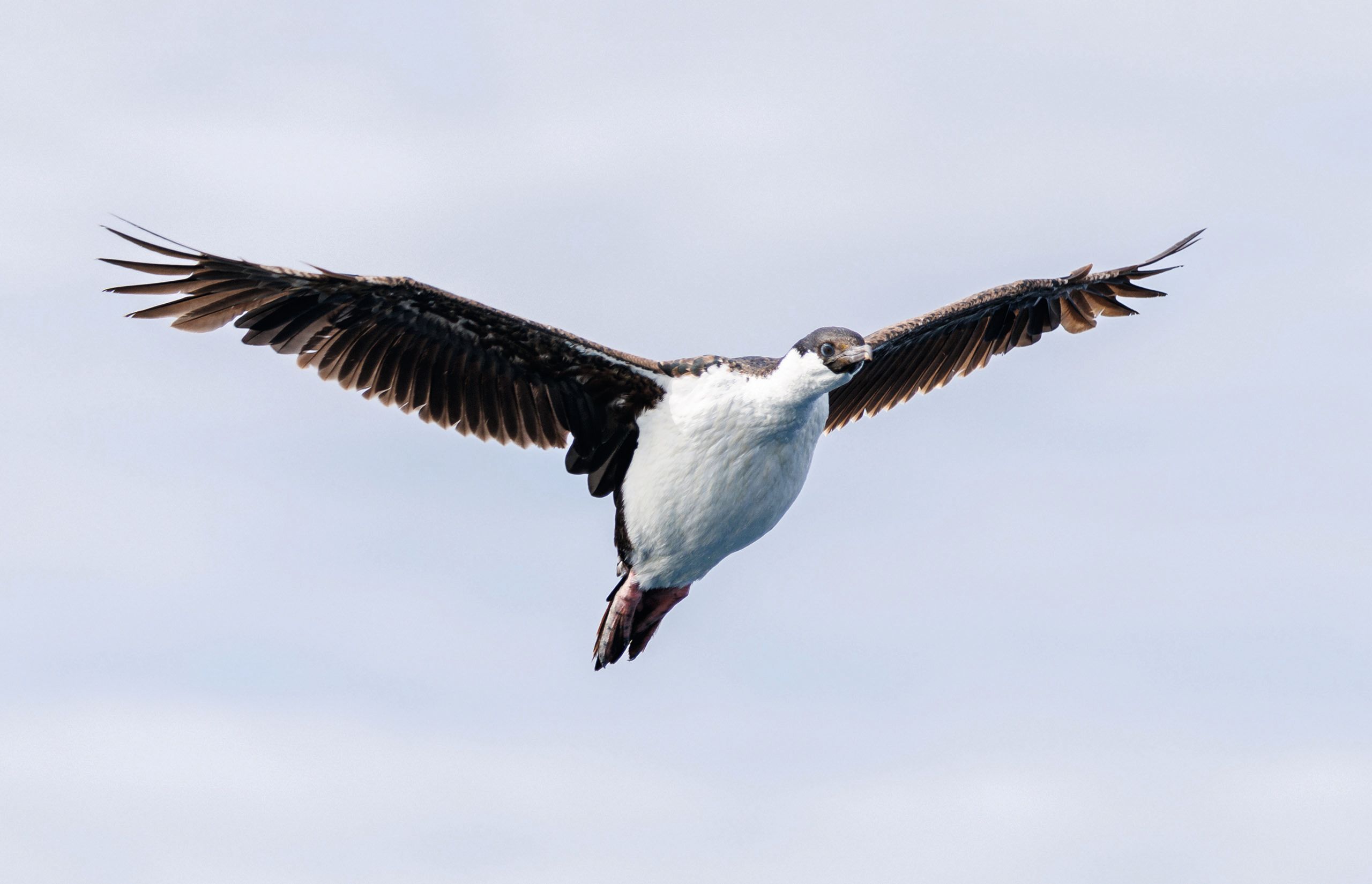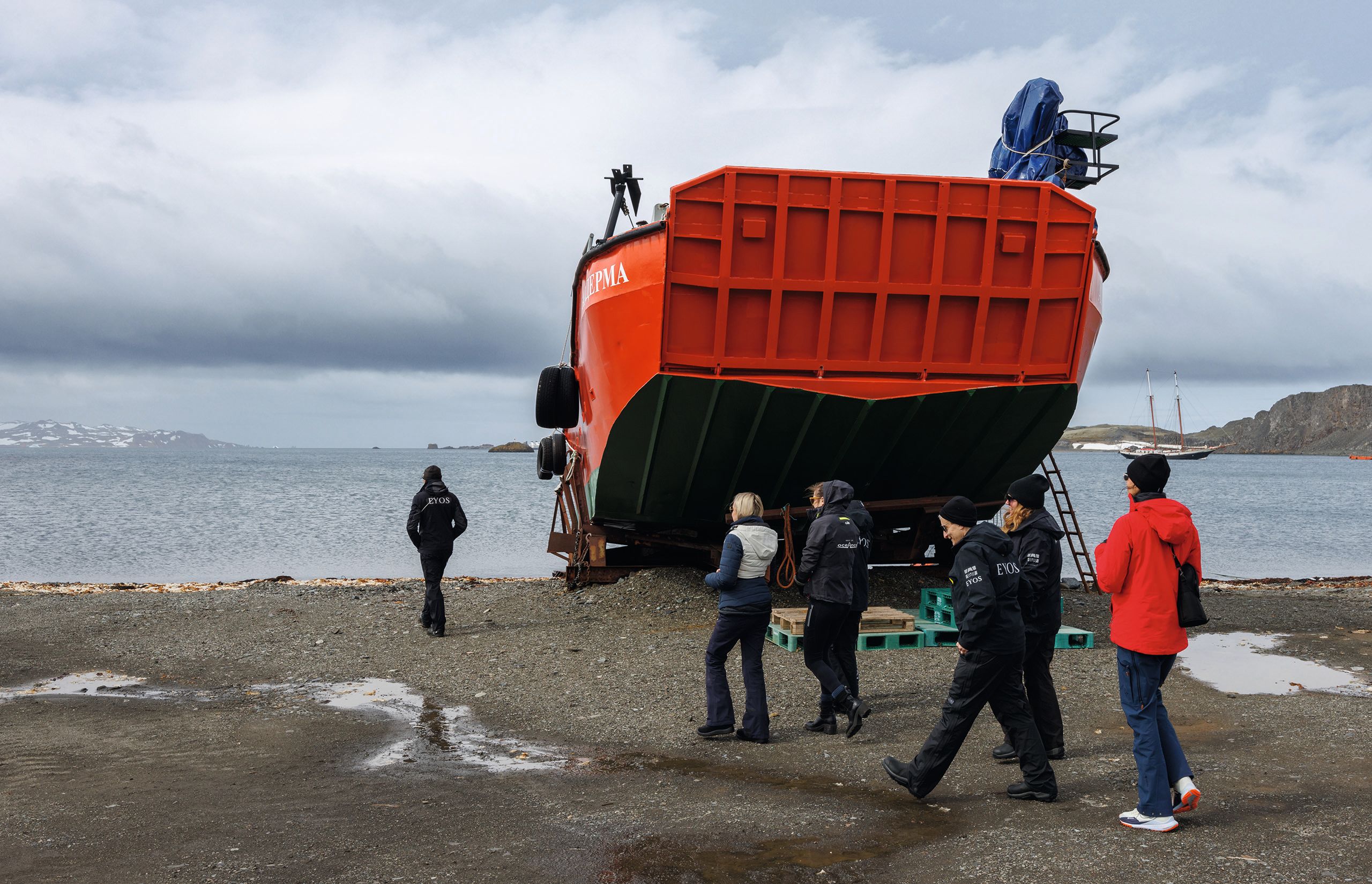THRILLS AND CHILLS
Exploring Antarctica on board the 48-metre superyacht Hanse Explorer
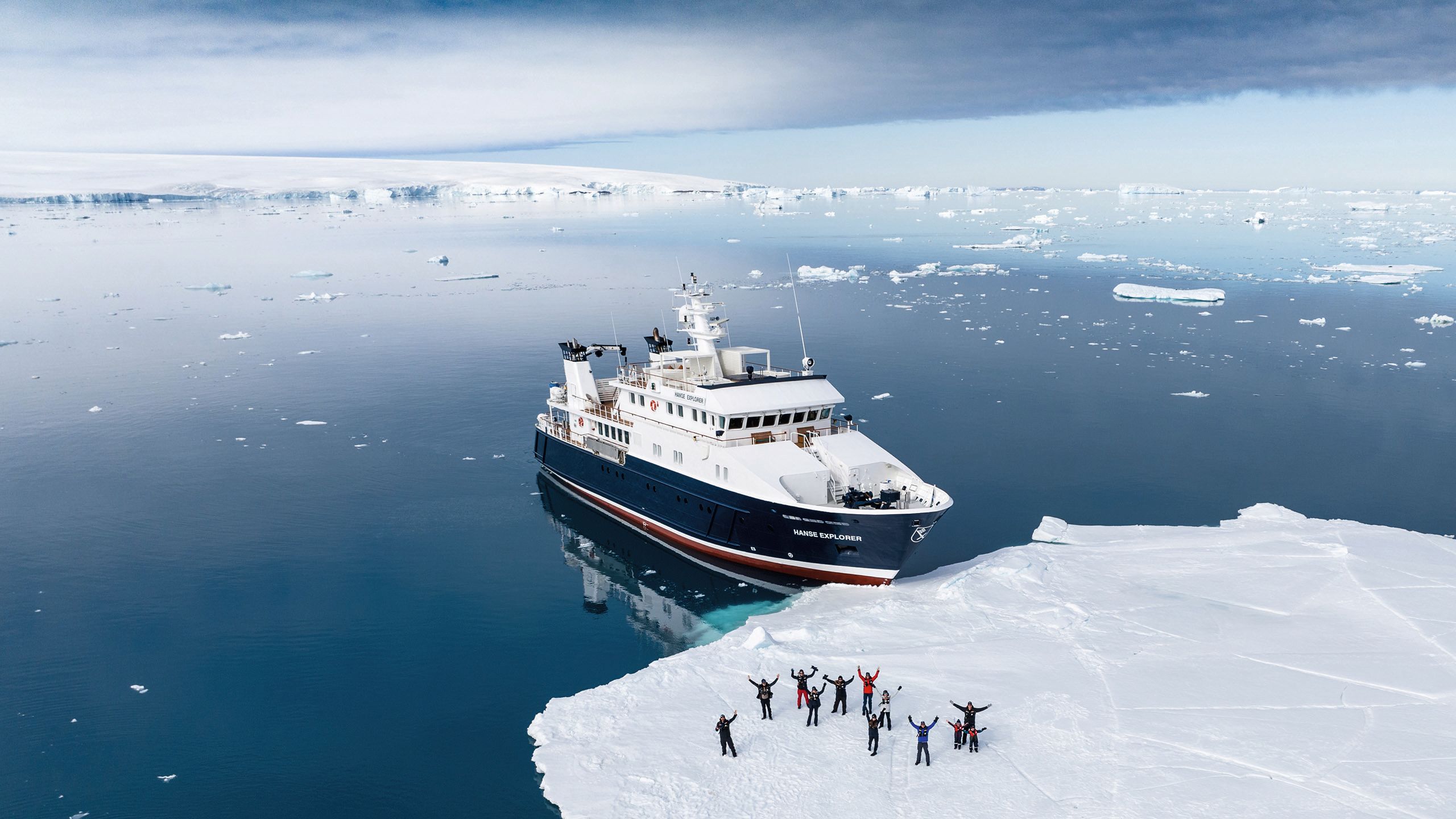
As part of BOAT's Special Adventure section in association with EYOS, Georgia Boscawen discovers there's no destination quite like Antarctica - and no better way to explore it than by superyacht
MOSAIC STUDIOS
Cast your eye over any image of Antarctica, and its towering, sugary glaciers make the destination instantly recognisable. There’s one thing the photographer’s lens can’t capture, however – and that’s its unique sound.
Those who visit soon recognise the icy soundtrack that skilled captains in the region know intimately. Sometimes a creaking, shuffling background noise; other times a dramatic thunderous snap, as tonnes of ice break away and crash into the water, leaving millions of years of history submerged and a swivelling new iceberg in its wake.
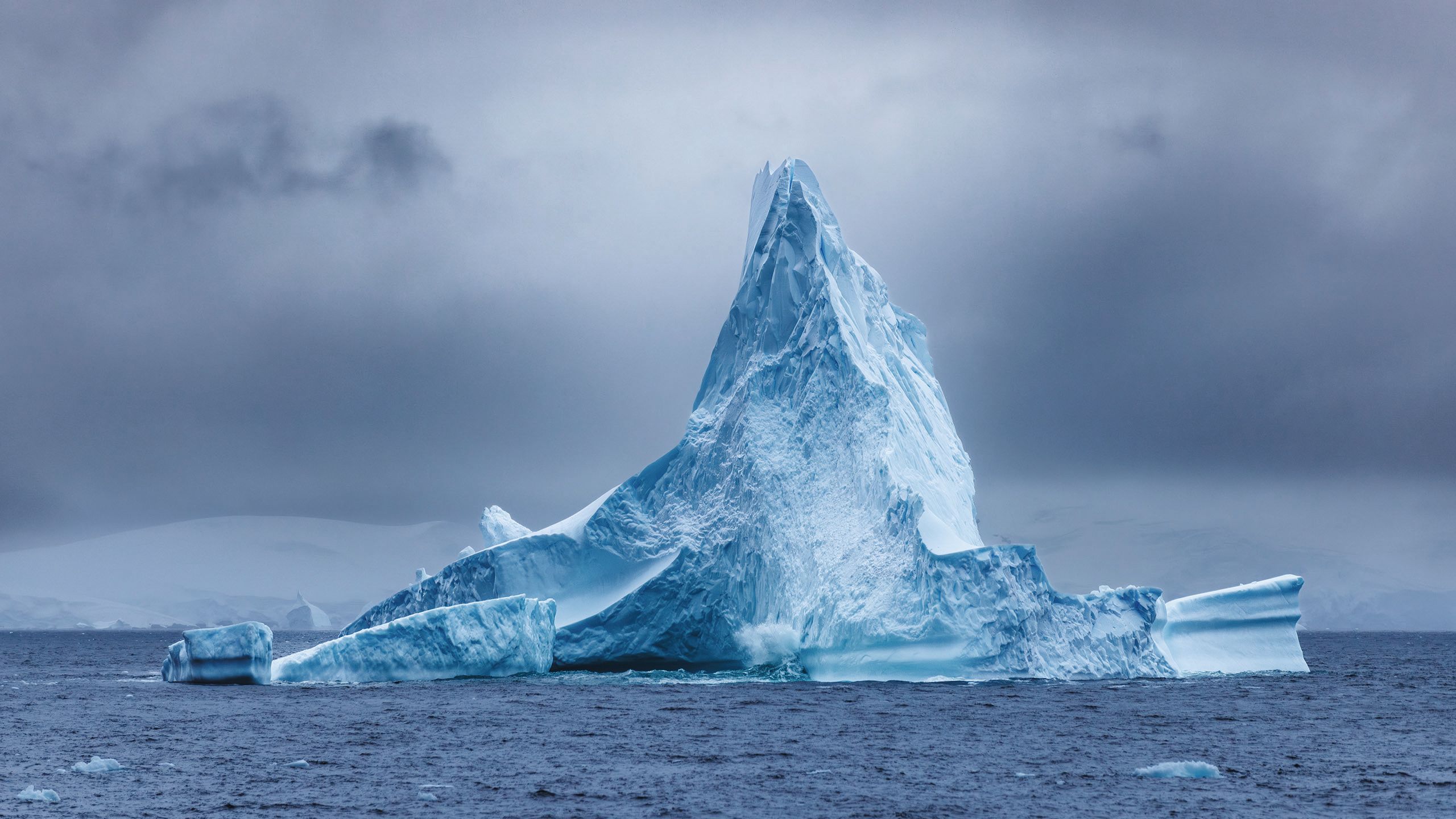

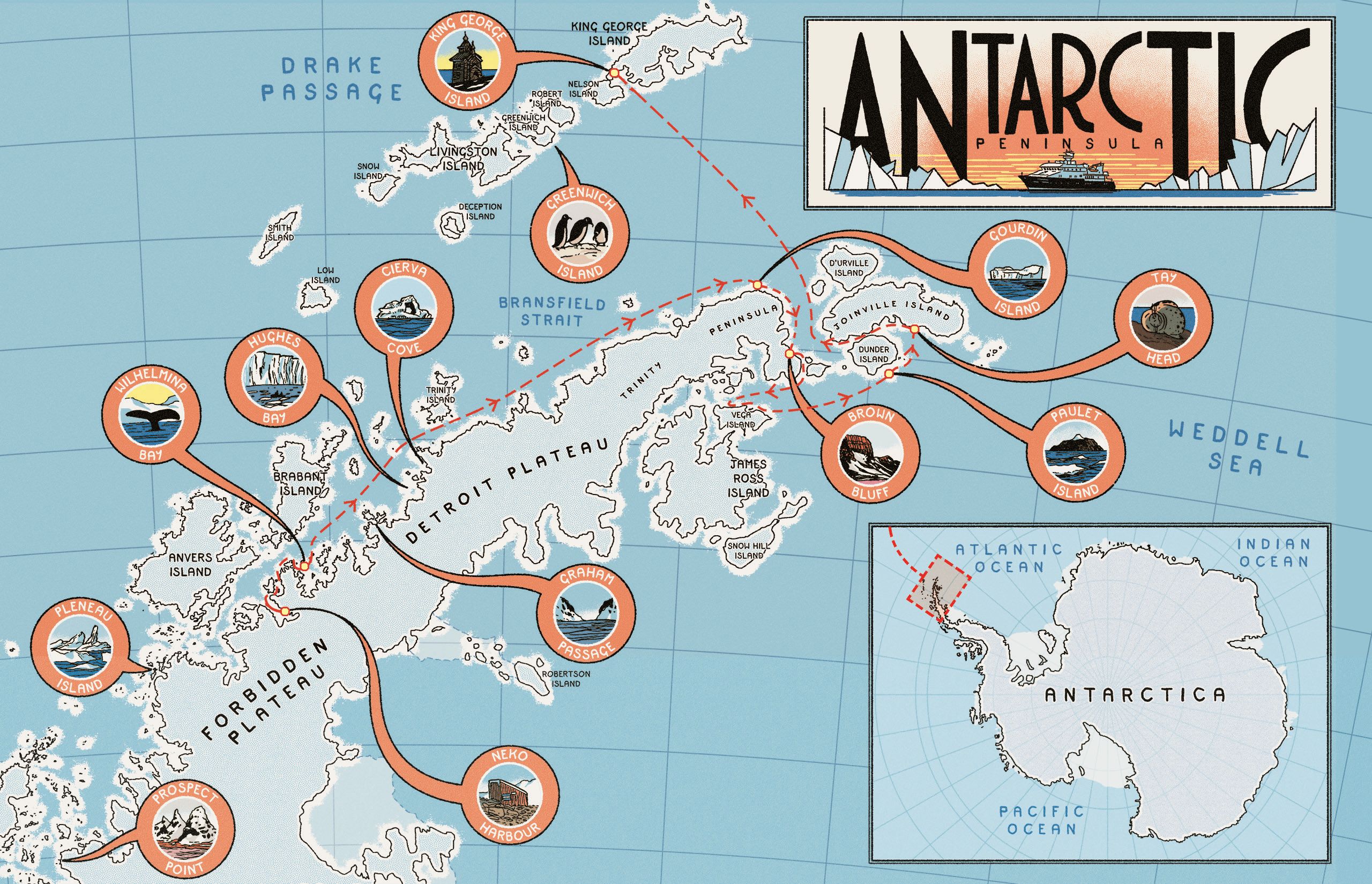
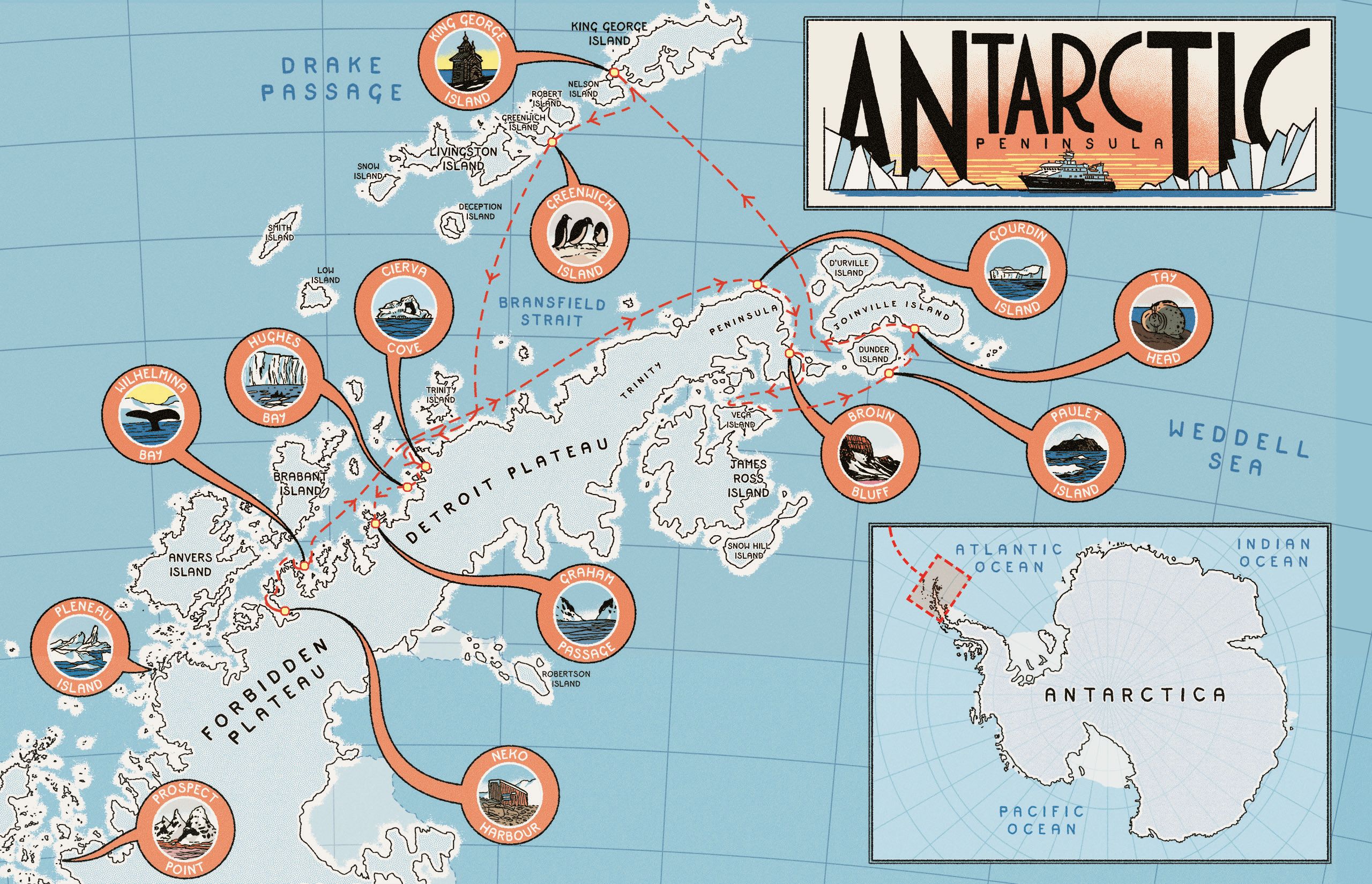
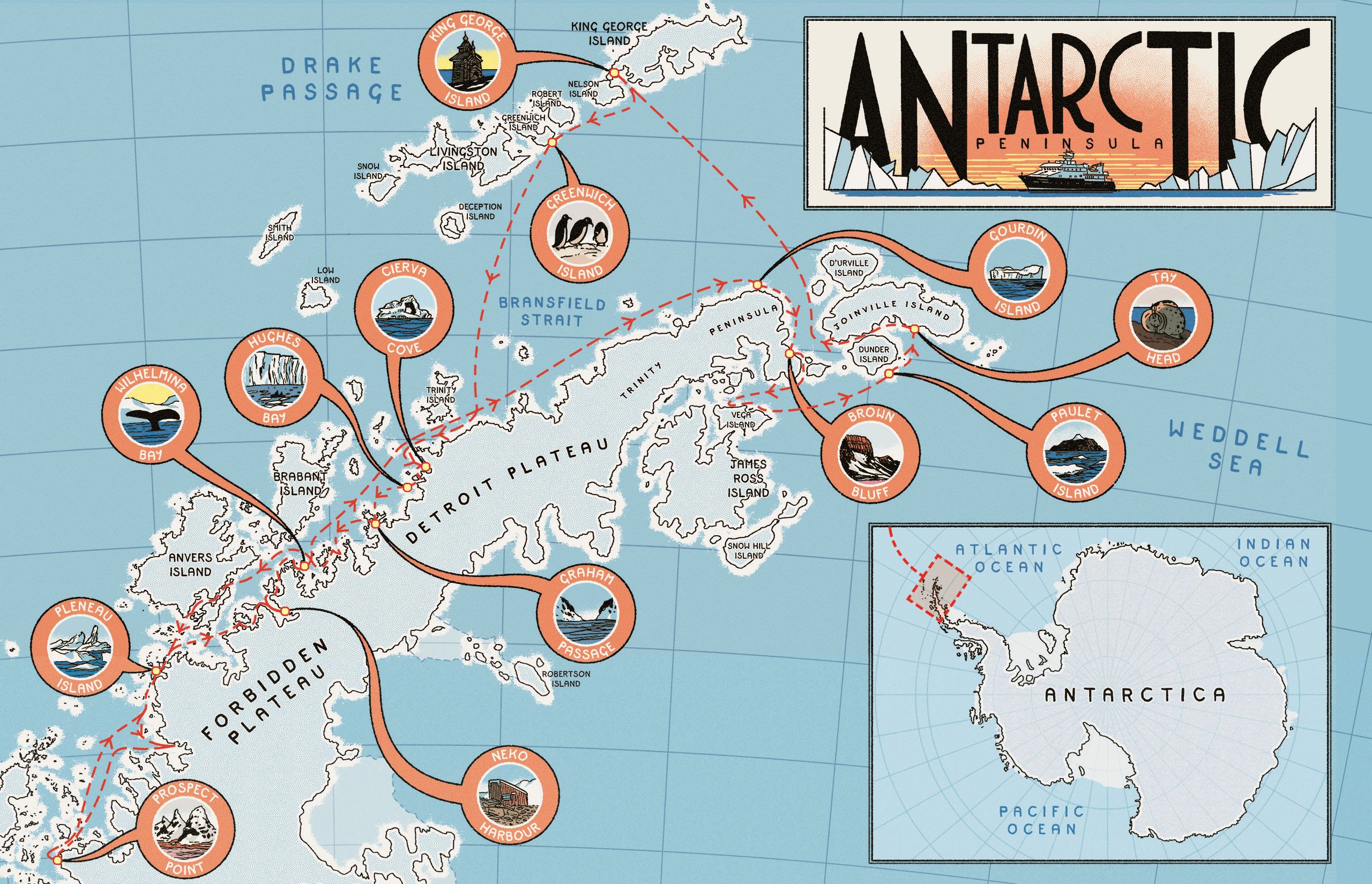
I experienced this in Neko Harbour, 170 nautical miles along the Antarctic Peninsula, as I approached the clutches of the bay in a Zodiac. I was there on a trip with exploration expert EYOS Expeditions and we were on the lookout for humpback whales, when a gunshot-like snap rang out across the bay. If we had been anywhere else in the world, chaos would surely have ensued – but this was Antarctica, where dramatic, mind-blowing natural phenomena are par for the course.
It’s one of the reasons that so many travellers have the continent at the top of their bucket list. And, while the number of expedition cruise ships continues to increase, I can attest first-hand that the best way to appreciate Antarctica’s beauty is via a smaller, exploration-style yacht – this gives guests the flexibility and intimacy that this magical destination commands.
Our vessel was the 48-metre Hanse Explorer. The most popular charter yacht in the region, she’s been taking guests to the area for more than 15 years.
She combines a commercial (unfaired) Ice Class hull, and a steadiness perfect for choppy passages, with luxurious interiors, first-class service and an experienced onboard expedition team.
Such a secure vessel makes the perfect base for exploring Antarctica, where you soon learn to expect the unexpected.
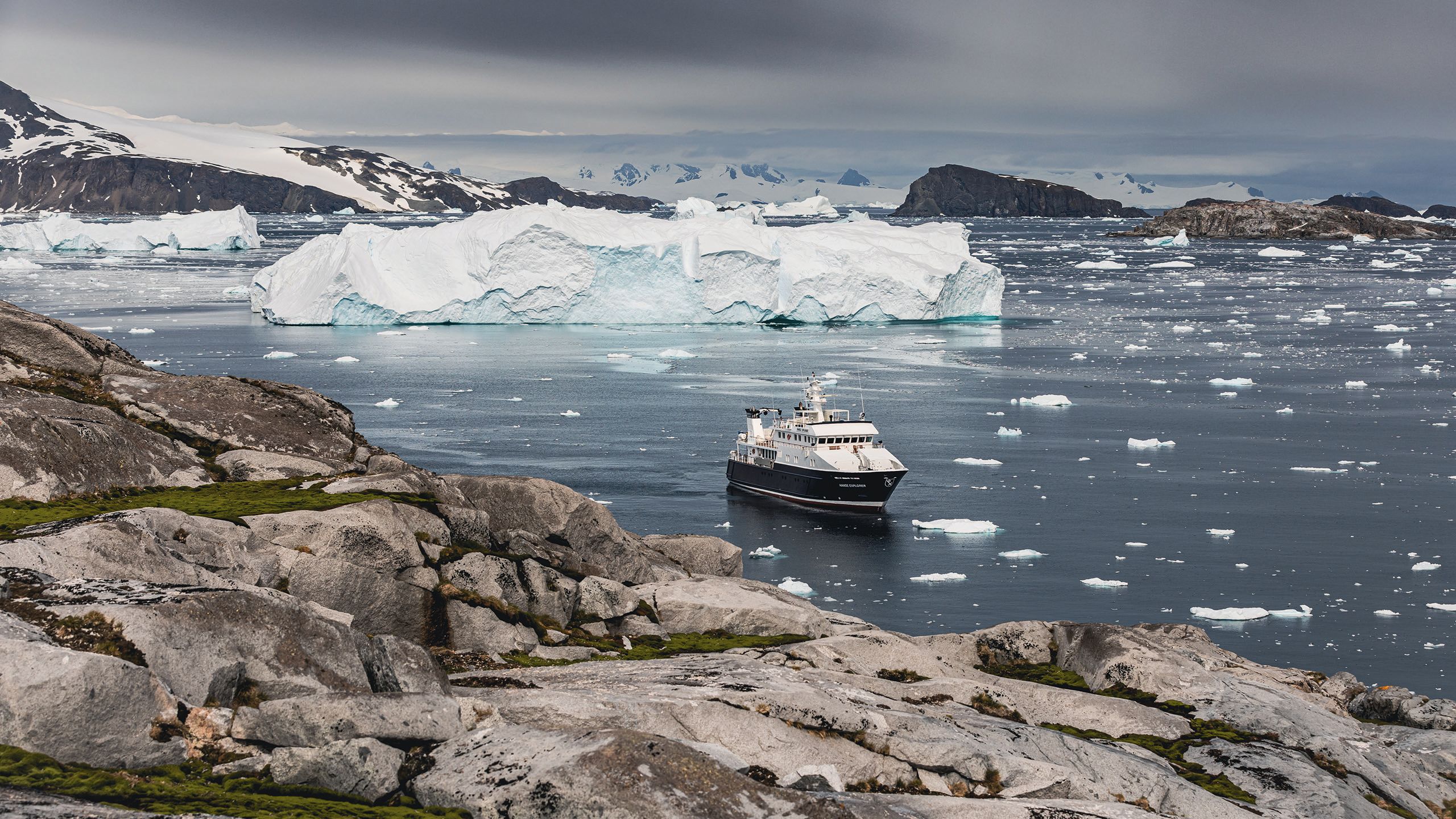
The Explorer Yachts Summit
The Explorer Yachts Summit is held annually at the Yacht Club de Monaco and is the only international summit dedicated solely to the explorer yachting sector.

Dinner, for example, is a moveable feast. On one memorable day, our expedition leader, Richard White, bellowed, “Whale to starboard!” just as a dish of steaming pan-seared sea bass was being served. Of course, all 12 guests leapt up to peer out of the main saloon windows to catch a glimpse of the massive humpback, breaching and fluking (raising their tails as they dive) beside us.
One of the many advantages of visiting the area by superyacht is the ability to change course, where a larger vessel wouldn’t be able to veer from its set route. Furthermore, as White noted, “the sense of wilderness is diminished if you are landing with 100 people or so. A yacht like this is special because it allows you to discover Antarctica yourself.”
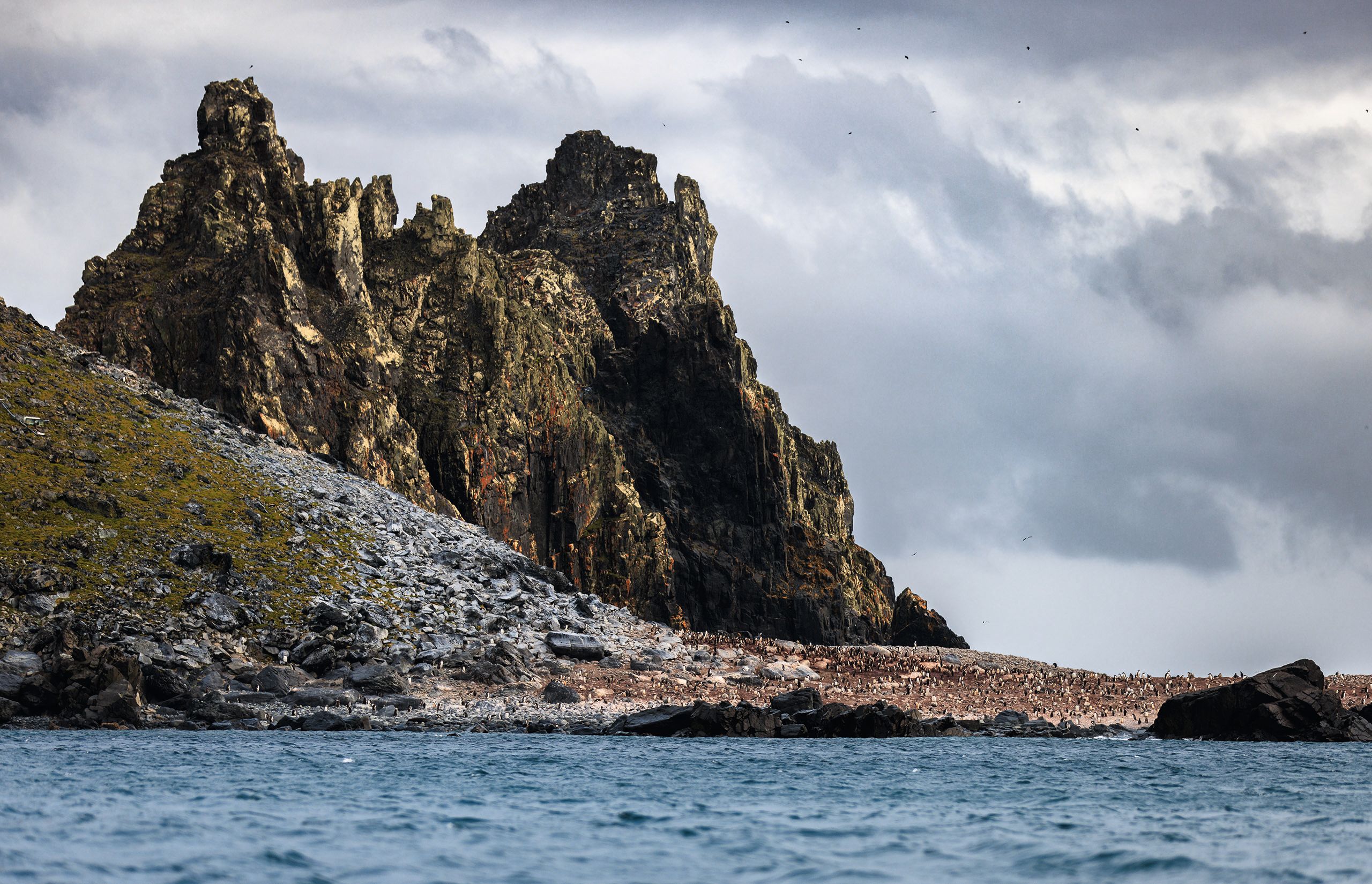
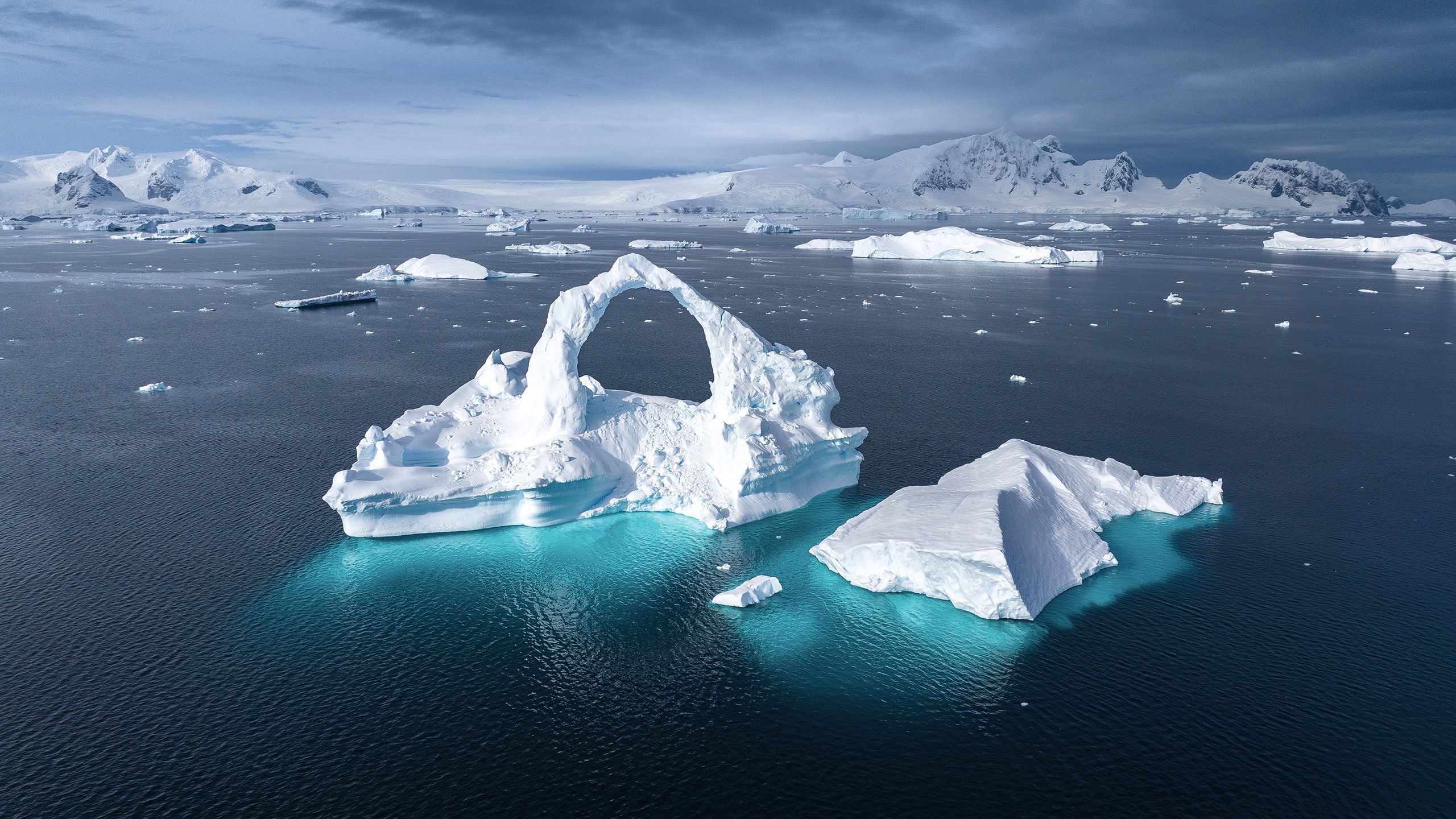
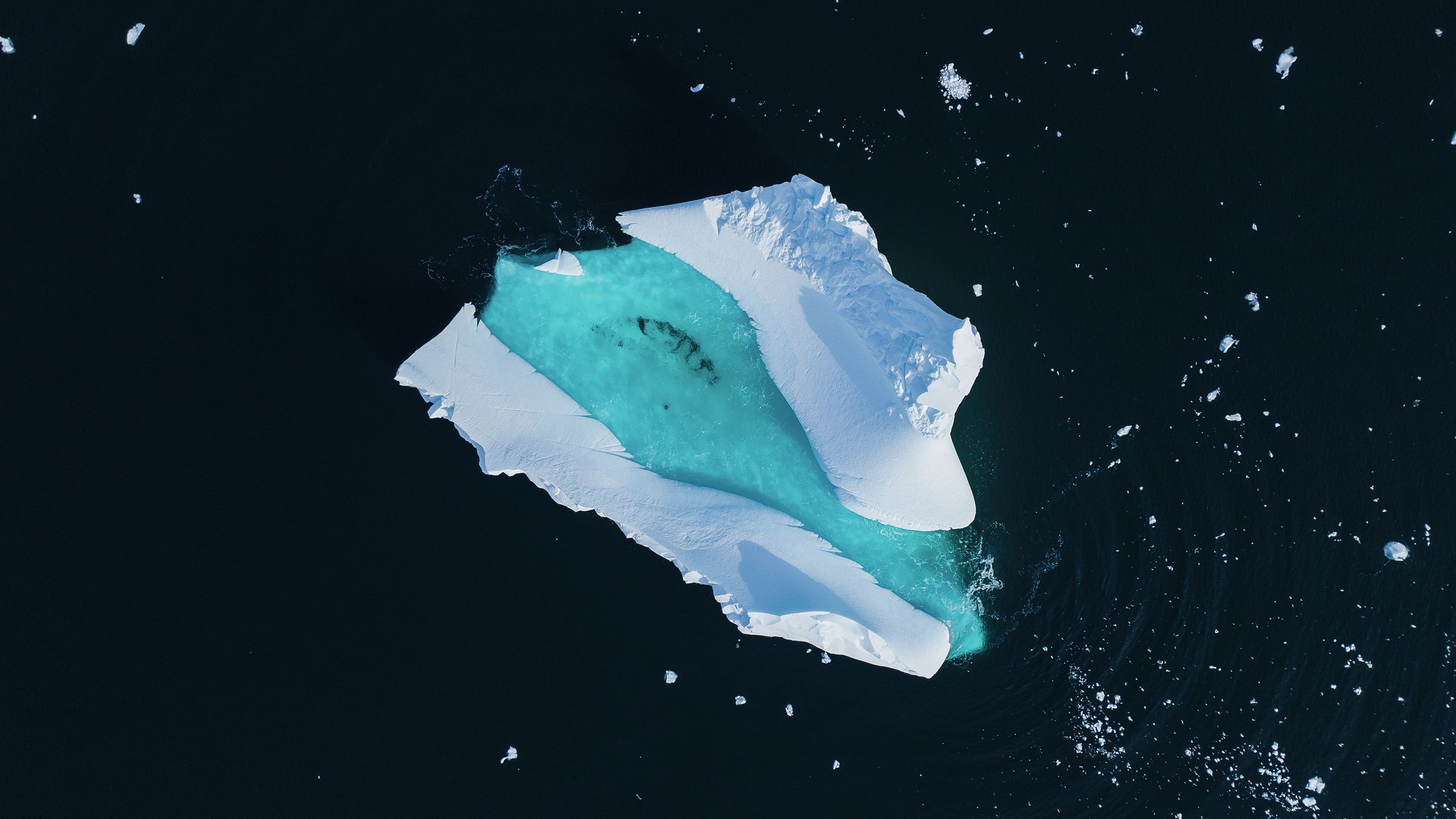
What’s more, most people cruising down to Antarctica will need to endure the Drake Passage, a gruelling body of water between Cape Horn and the South Shetland Islands of Antarctica. Famed for its mighty winds and waves of up to 10 metres high, this is how almost all expedition cruises arrive on the peninsula.
While Hanse Explorer could quite easily cruise the Drake Passage – and has done many times – guests who want to jump straight into their expedition can skip over this leg on a short, albeit bumpy, flight to King George Island.
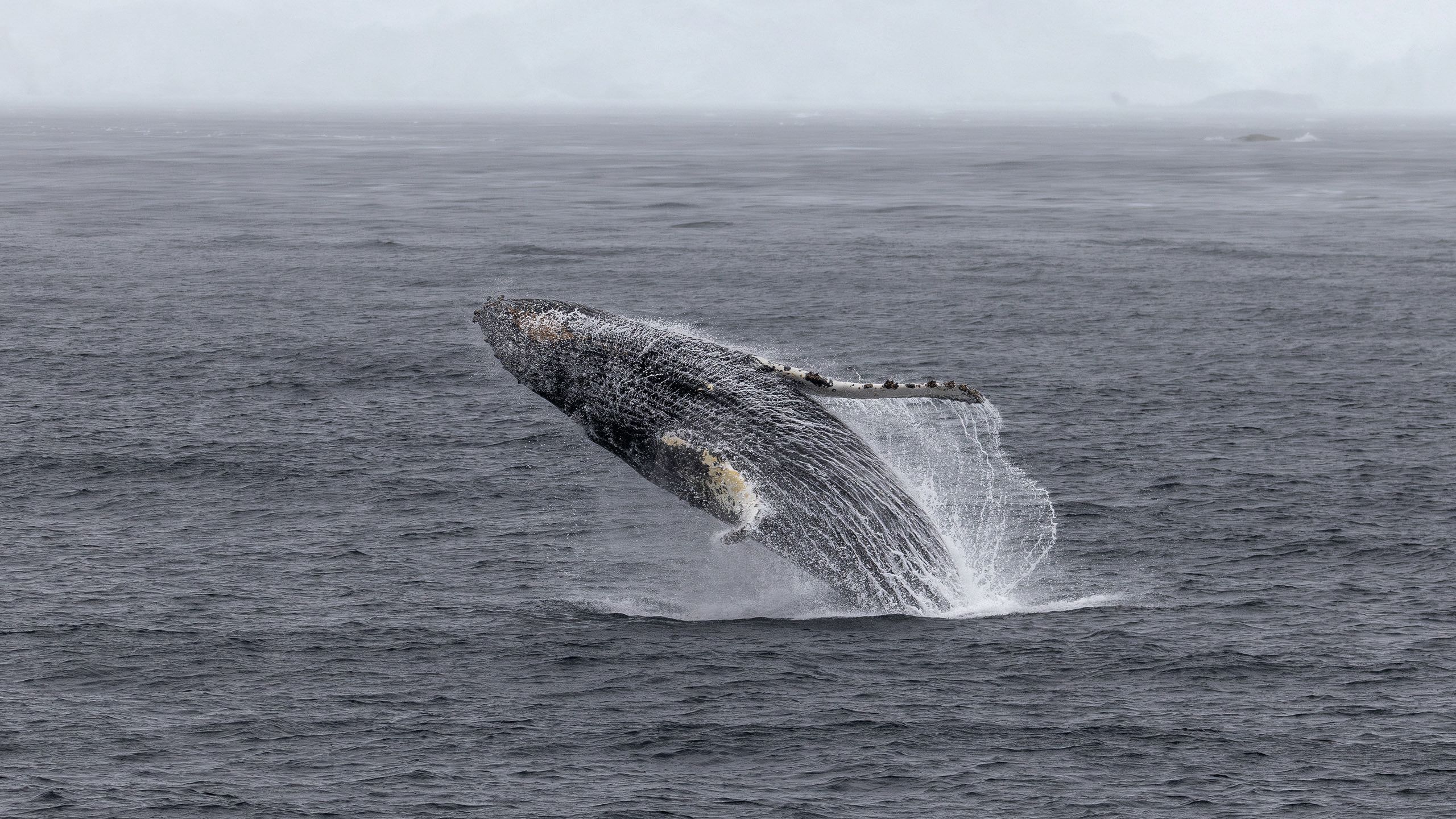
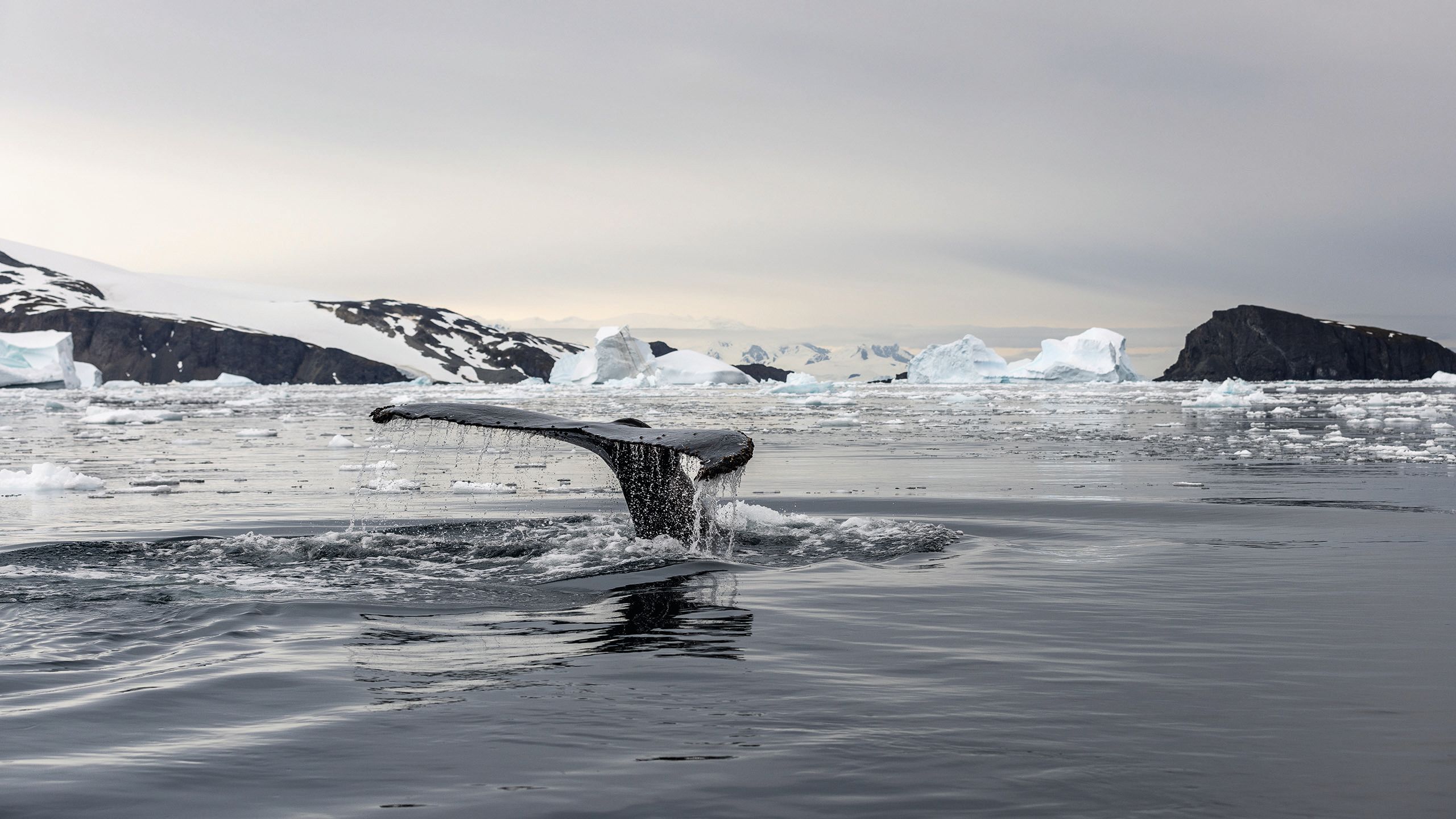
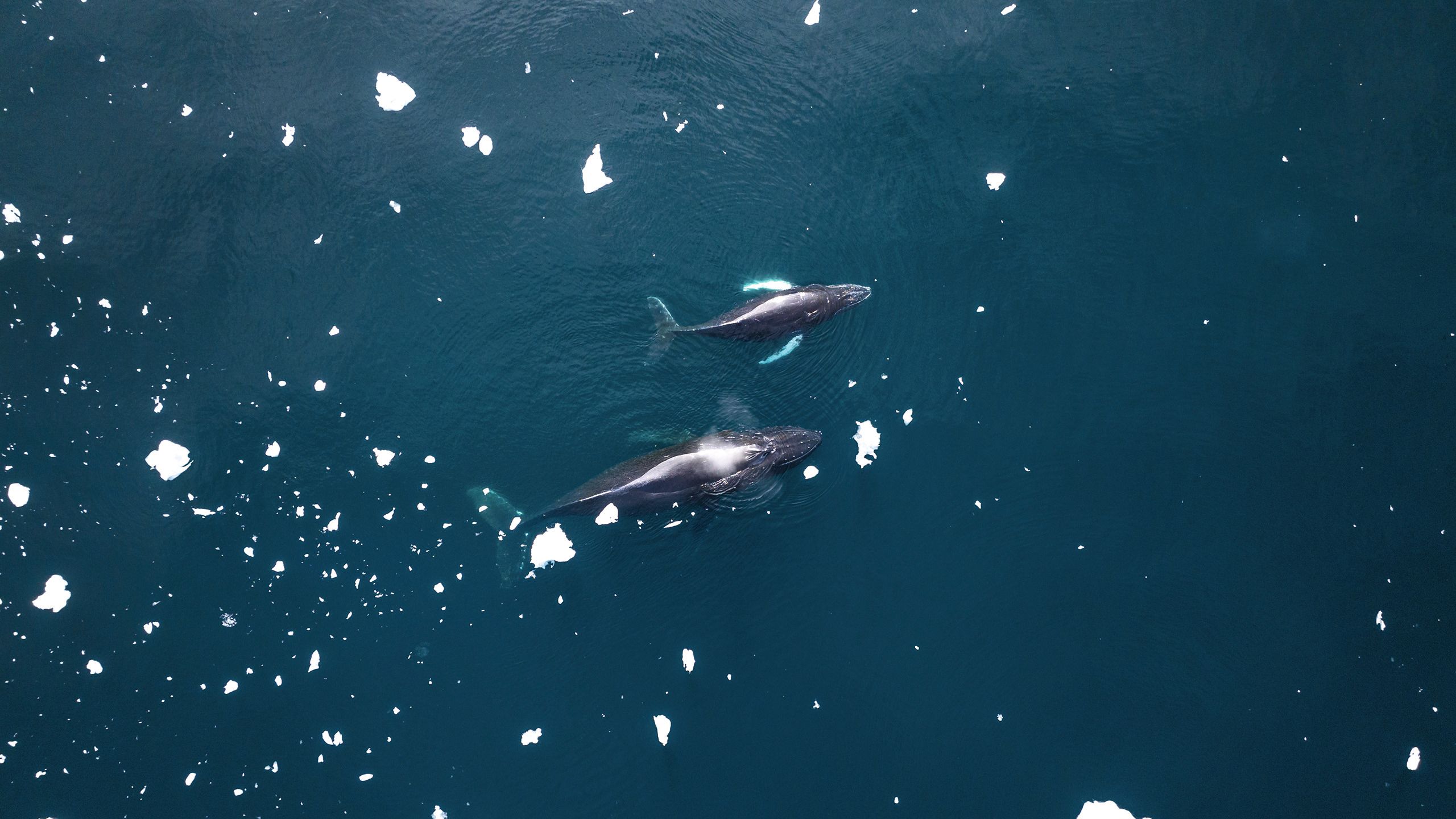
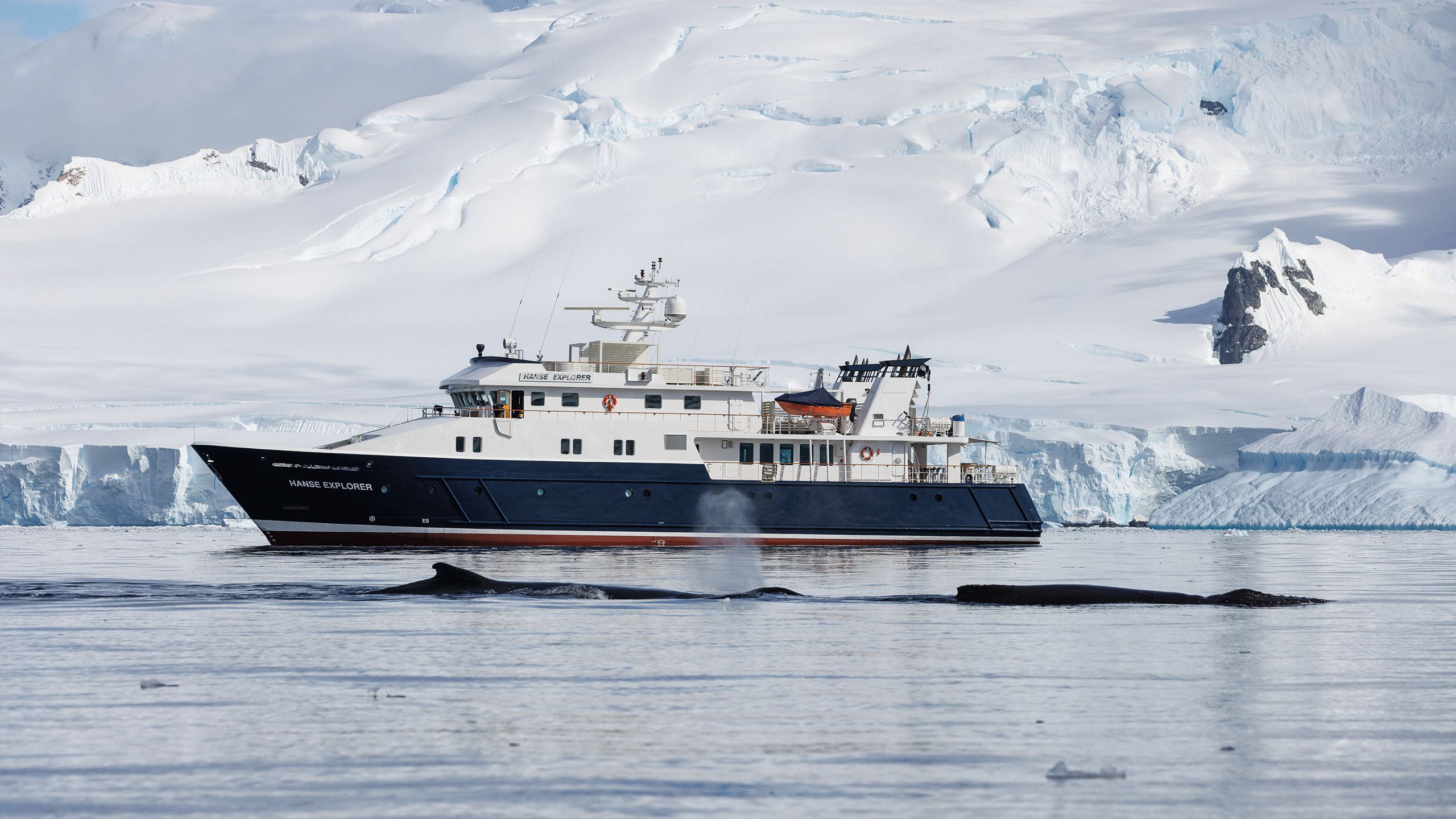
Back to the whales, and not content with peering at them through Hanse Explorer’s portholes, we abandoned our dinner, changed back into our thick Antarctic expedition gear and leapt in the Zodiacs for a clearer view.
The sound of a humpback’s pectoral fin slapping against the water is loud enough to reverberate around Wilhelmina Bay, even though it is 15 nautical miles wide. The sea mammals seem even bigger from a small Zodiac and this one was vast at more than 13 metres.
“It’s turning towards us,” said White at the helm of the Zodiac, as he selected neutral and began to drift. He was right, and within moments the huge, lonesome humpback glided up to us – we could hear the gentle whistle as she pulled an intake of breath and we could even smell the scent of fish emanating from her mouth. “Those nodules above the whale’s mouth are actually hair follicles,” said White as the whale continued towards us.
Seconds later, a blast from below the surface jetted up metres away from the Zodiac. Afterwards, the whale’s white fins could be seen gliding underneath us to continue her feed. Silence fell over us as we took in this spine-tingling experience, a silence that was broken only by another powerful blow across the bay.
The whale population here is far greater than expected. Almost every day, humpbacks sidled up to the Zodiac and raised their dish-sized eyes out of the water to see what we were up to. The population hasn’t always been this way, but it is expedition organisations such as EYOS that are helping to boost the numbers.
The International Association of Antarctica Tour Operators (IAATO) states that “the data gathered by tour companies operating in Antarctica is strengthening safeguarding measures for whales and seals along the region’s Peninsula”. It was like real-time research as Richard White and EYOS co-founder Tim Soper snapped their cameras at the whales – not only for their own enjoyment, but to enter the markings into a database that can identify their movements.
MOSAIC STUDIOS
MOSAIC STUDIOS
MOSAIC STUDIOS
MOSAIC STUDIOS
MOSAIC STUDIOS
MOSAIC STUDIOS
MOSAIC STUDIOS
MOSAIC STUDIOS
Top left: climbing the glaciers. Bottom right: expedition leader Richard White on the alert for humpback whales
To operate here, and to aid Antarctica’s protection, those leading expeditions must adhere to IAATO’s protocols. These include rules such as not stepping on anything green – there are only two native species of flowering plants in Antarctica so green space is rare – not taking food on land and not introducing non-native species.
Having been an IAATO member for more than 15 years, EYOS, along with Hanse Explorer, is playing an active part in its protection. Antarctica is governed by the Antarctic Treaty of 1959, which established it as a zone of peace and science. The treaty is a global partnership that now includes 50 countries and is a remarkable example of international co-operation.
Nothing will reinforce the importance of Antarctica’s protection than gentoo penguins staggering around the ice like a crew of unwieldy toddlers. As we landed on Pléneau Island, 219 nautical miles along the Antarctic Peninsula, the sound of them resembled a railway station at rush hour, as the penguins clamoured, squawked and chattered around the snow-capped peaks.
There’s a lot going on at this time of year; while some young chicks were almost ready to take their first swim, others stood still to endure their catastrophic moult – replacing worn feathers to maintain their waterproofing for the season ahead.
Gentoo penguins stagger around the ice like a group of unwieldy toddlers
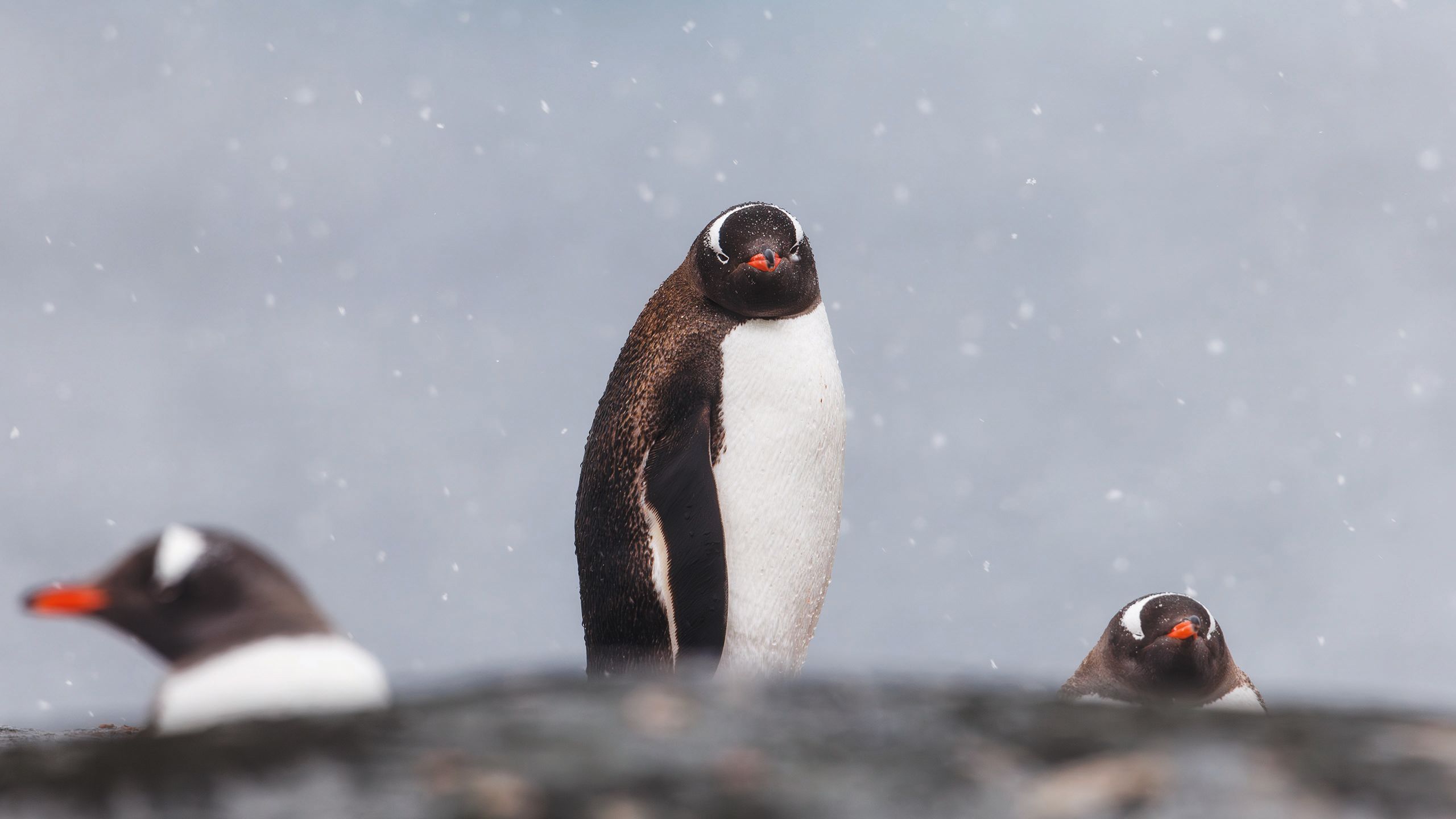
In February, the shores of the Antarctic Peninsula were alive with wildlife. Young male fur seals lined the beaches with their noses pointing up to the sky as if to indicate their dislike of one another. “Just be wary of the seals as they will chase you off if you get anywhere near them,” said White as we trudged along the pebble beach, dressed to the nines in our Antarctic gear.
MOSAIC STUDIOS Antarctica has a dramatic beauty and is home to several varieties of seal
MOSAIC STUDIOS Antarctica has a dramatic beauty and is home to several varieties of seal
Despite their angry expressions, young fur seals have a distinctive whine – a vocalisation they seem to deploy while picking on fellow seals on the beach, or threatening a penguin should it get too close. Several elephant seals lined the beach too, but not the leopard seals, which tend to lurk in the shallows waiting for unsuspecting penguins.
The spectacle of ice alone was peculiar – no people, no greenery, just rock (occasionally moss) and ice in its many forms that conceals the Antarctic wildlife beneath. At sunrise, which was early at 4.30am, the spectacle was even more intense as we cruised past huge sun-drenched icebergs 30 metres high, which had taken on the auburn glow of the morning sun.
MOSAIC STUDIOS
MOSAIC STUDIOS
Their massive forms can change the entire seascape – and the yacht’s route, given their sporadic nature as they bobbed freely around the bays. While mornings don’t typically start this early, it’s worth the trip up to the bridge to see it.
Hanse Explorer has an “open ship policy”, which means guests can head up to the bridge and take in the views 24 hours a day. Thankfully, the yacht is more than capable of negotiating rogue sea ice. “She doesn’t have a faired hull unlike other yachts down here, so we can really get into the ice without damaging the hull,” said Soper.
Inside, things are more refined, with a freshly refurbished main saloon that is filled with light woods and a neutral palette of creams, clean whites and chromed silvers, with a touch of navy blue. Life on board is also in line with that of any modern superyacht, with cocktails in the main saloon before dinner, decadent lunches and evenings spent in the spa pool. Built in 2006 by German shipyard Fassmer, the 48-metre vessel is a seasoned pro in Antarctica.
Wildlife on the Antarctic Peninsula
- Leopard Seals
- Fur seals
- Elephant seals
- Crabeater seals
- Humpback Whales
- Gentoo penguins
- Chinstrap penguins
- Orcas
- Arctic terns
- Antarctic shags
MOSAIC STUDIOS In February the shores of Antarctica are thronging with wildlife such as shags
MOSAIC STUDIOS In February the shores of Antarctica are thronging with wildlife such as shags
She was refitted in 2021 with an all-encompassing refurbishment that included new contemporary interiors and new exterior spaces. Each of her six well-appointed guest cabins lie forward of the main saloon and have large windows to spot wildlife from the comfort of your bed.
Thankfully, zero-speed fin stabilisers also make her a comfortable ride in the Antarctic swells. The feeling is luxurious but not showy, for she is, after all, an expedition yacht. The expedition takes priority, with the EYOS team continually on watch to see what wildlife there is along the way.
One by one, we leapt off the yacht and swam among the icebergs
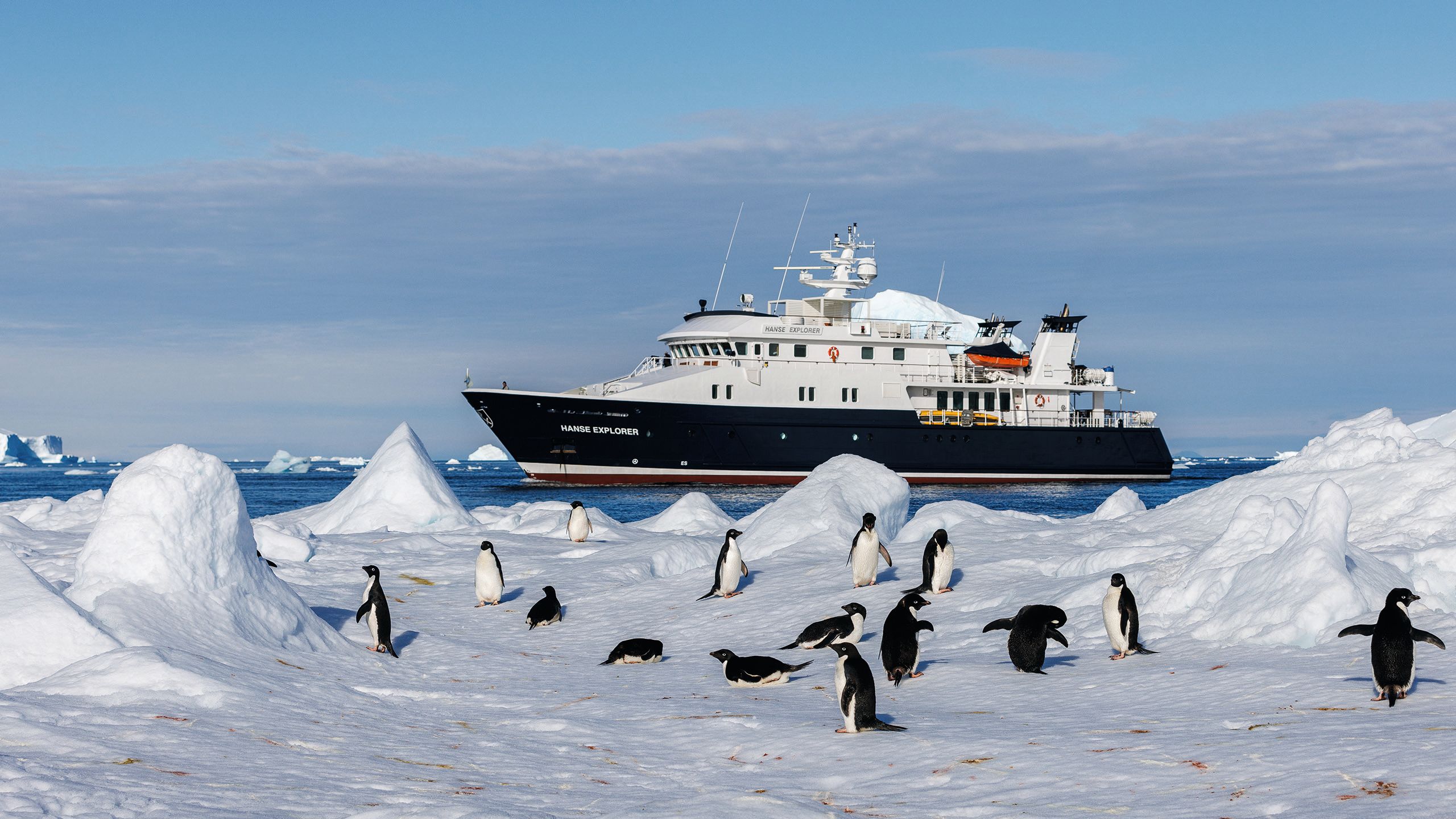
And there are thrills to be found beyond the flora and fauna. “Everyone down to the swim platform,” commanded Soper on our final night. “Polar plunge time!” With trepidation, the other guests and I peeled ourselves from the clutches of the main saloon where hot chocolate was being served, and made our way down to the mudroom – all of us cursing our pledge to join in the icy jump at dinner the previous night.
From the mudroom, we leapt off the stern into the freezing waters – but not before a quick scout to ensure there were no lurking leopard seals. One by one, we leapt off the yacht and swam among the icebergs themselves.
MOSAIC STUDIOS Hanse Explorer enables guests to reach parts of the Antarctic Peninsula that cruise ships can't access
MOSAIC STUDIOS Hanse Explorer enables guests to reach parts of the Antarctic Peninsula that cruise ships can't access
As my turn approached, I stepped up to the edge with adrenaline running high, and finally leapt off the stern into the glacial water – it only took a moment, but I resurfaced, caught my breath and clambered back up the ladder in one swift action. With a racing heart and short breaths, I stood on the deck feeling elation for having completed the challenge, but freezing cold and questioning who in their right minds would do that twice, yet still thinking, “I want to do that again…”
It’s experiences like this that make up the magic of Antarctica – a destination where there’s so much to see and do, where no two days are the same, and a place which, despite its hostile appearance, is thrillingly buzzing with life.
Antarctica checklist: what to bring
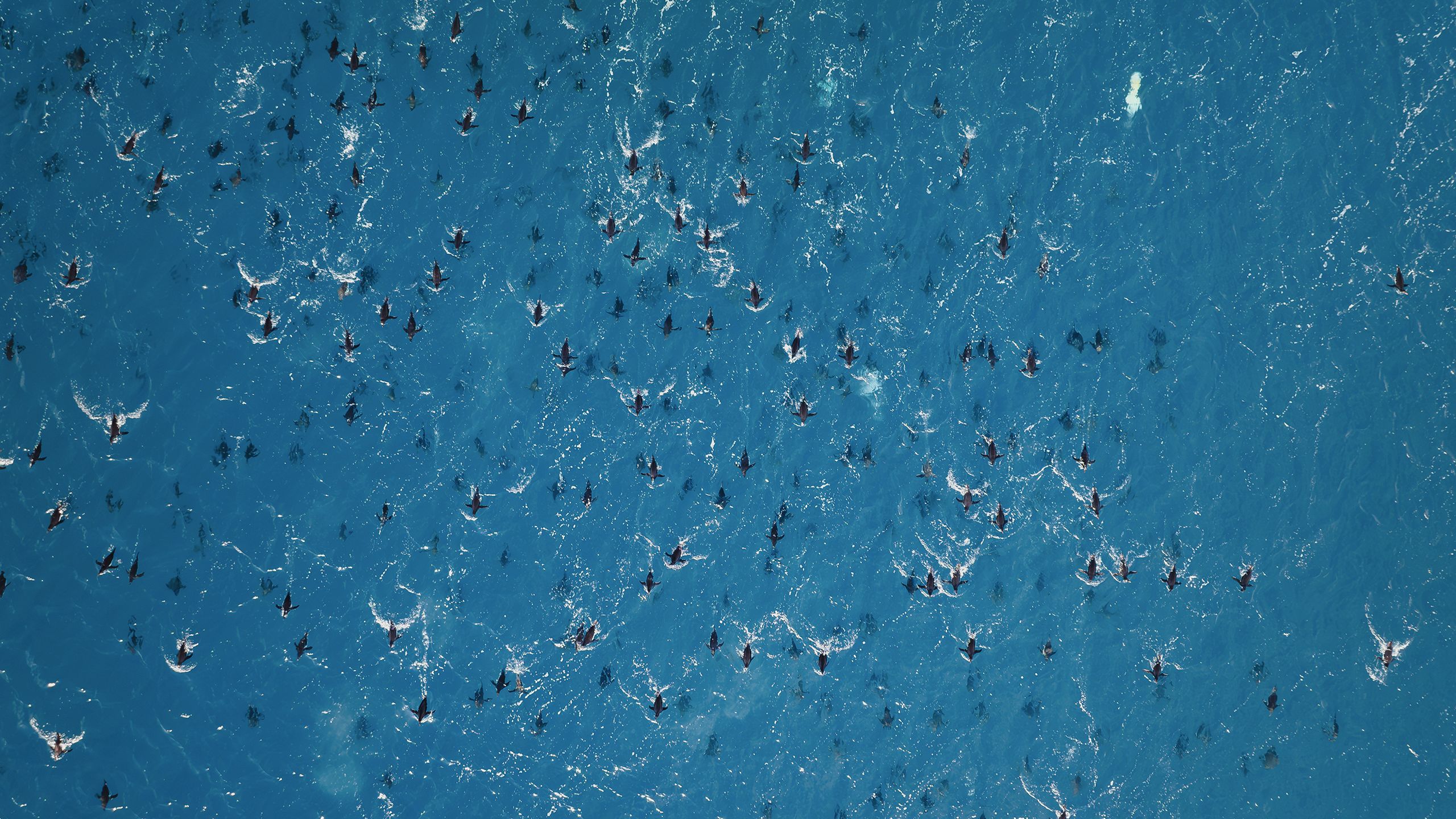
Medical evacuation insurance and specialised travel insurance
A good pair of binoculars with a magnification of 10 to 12
Two pairs of polarised sunglasses with UV protection
Camera, lenses and memory cards
Thermal and waterproof clothing (similar to that of a ski holiday)
Sunblock (UV is strong here due to the hole in the ozone layer)
Muck Boots or other waterproof rubber boots for wet landings
Water-resistant backpack
First published in the September 2024 issue of BOAT International. Get this magazine sent straight to your door, or subscribe and never miss an issue.



